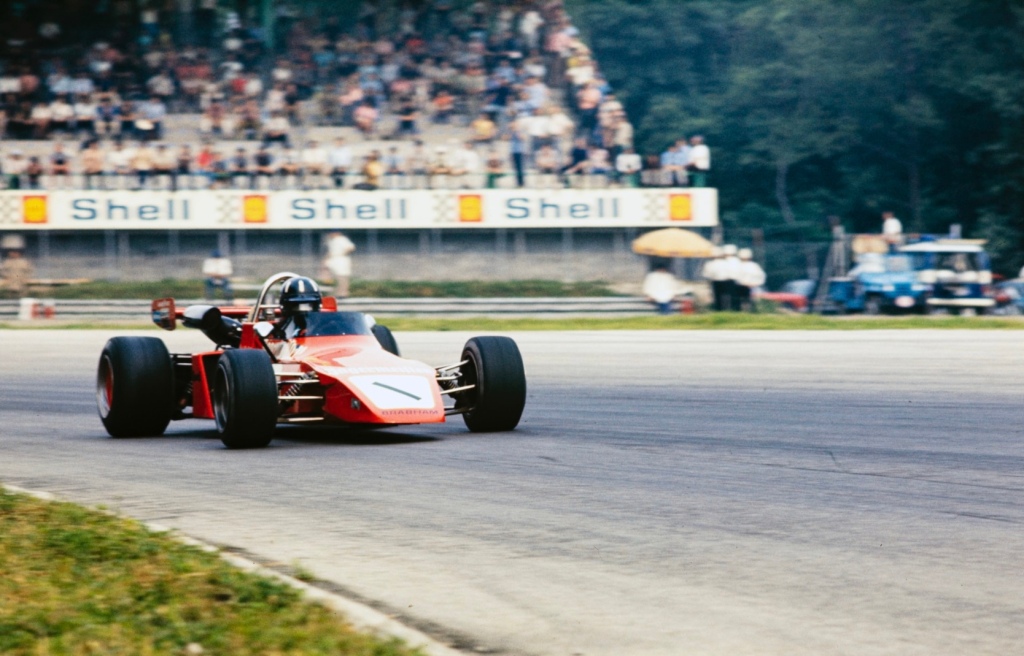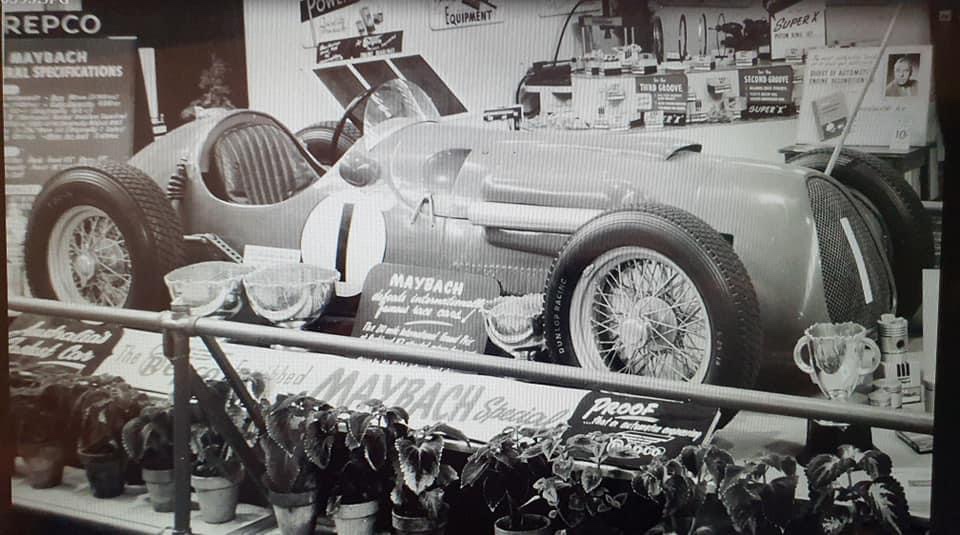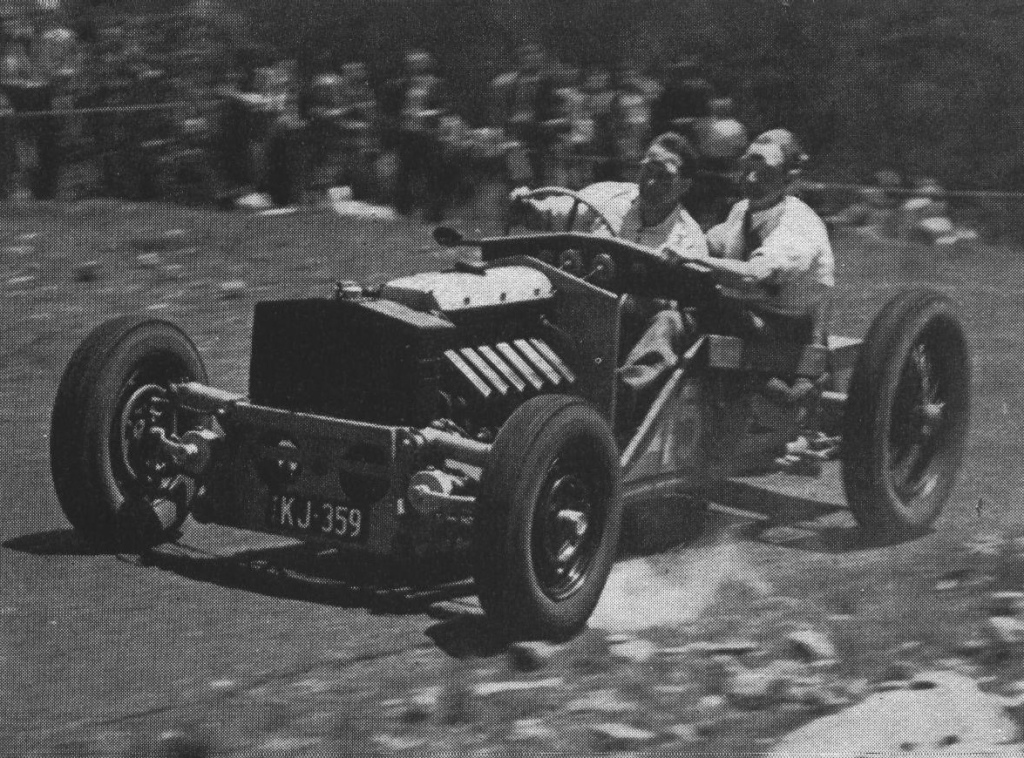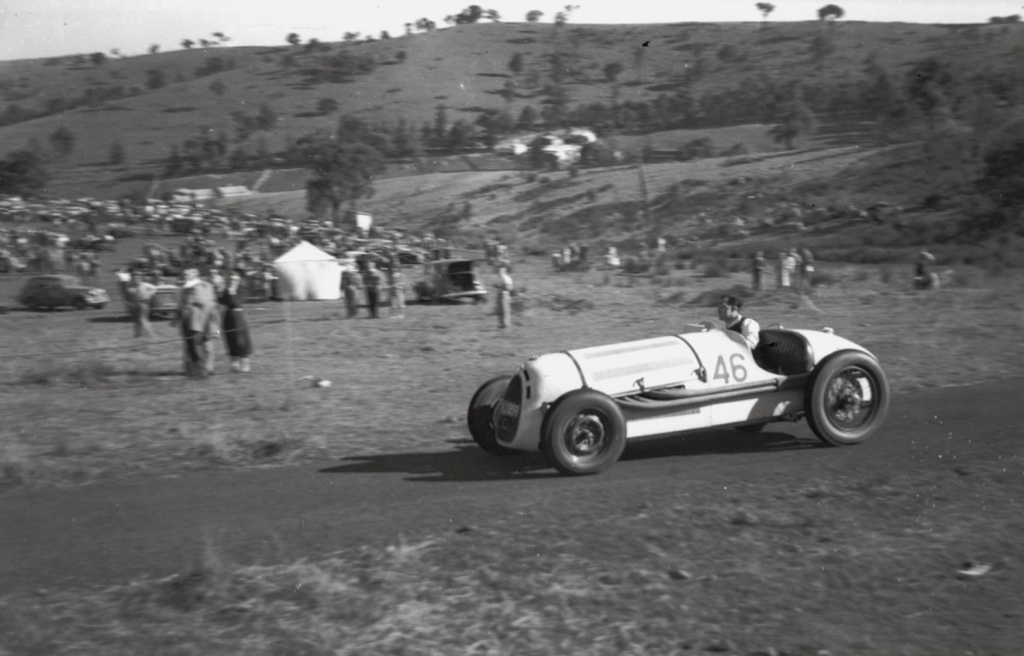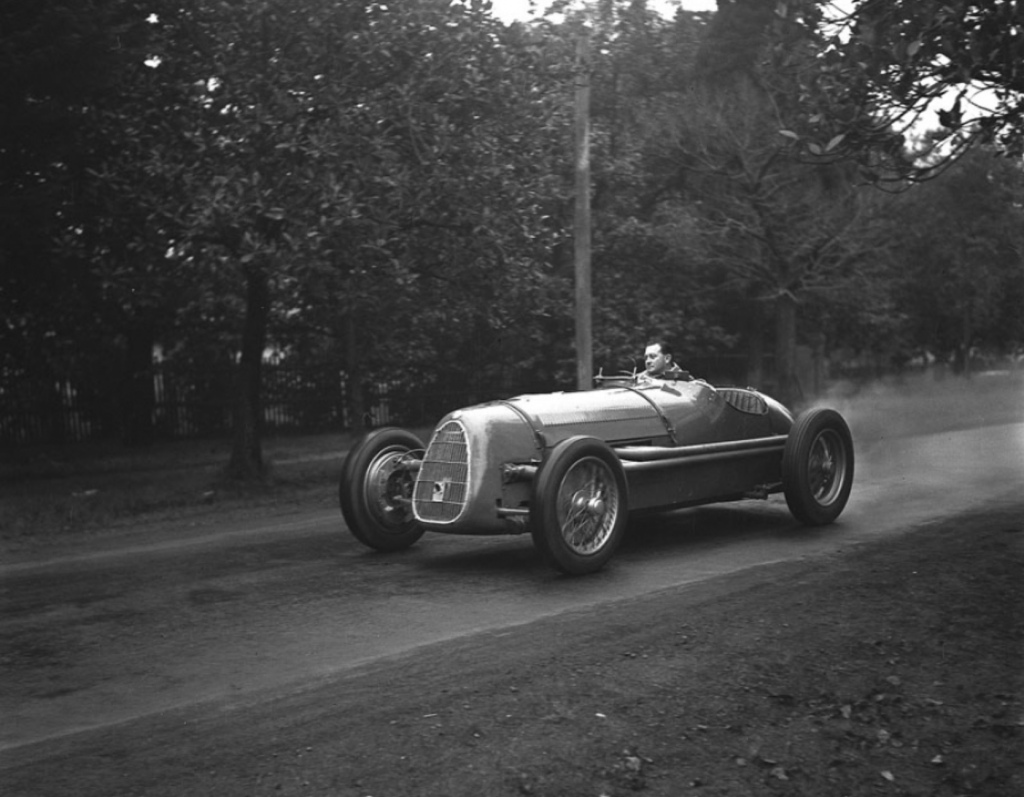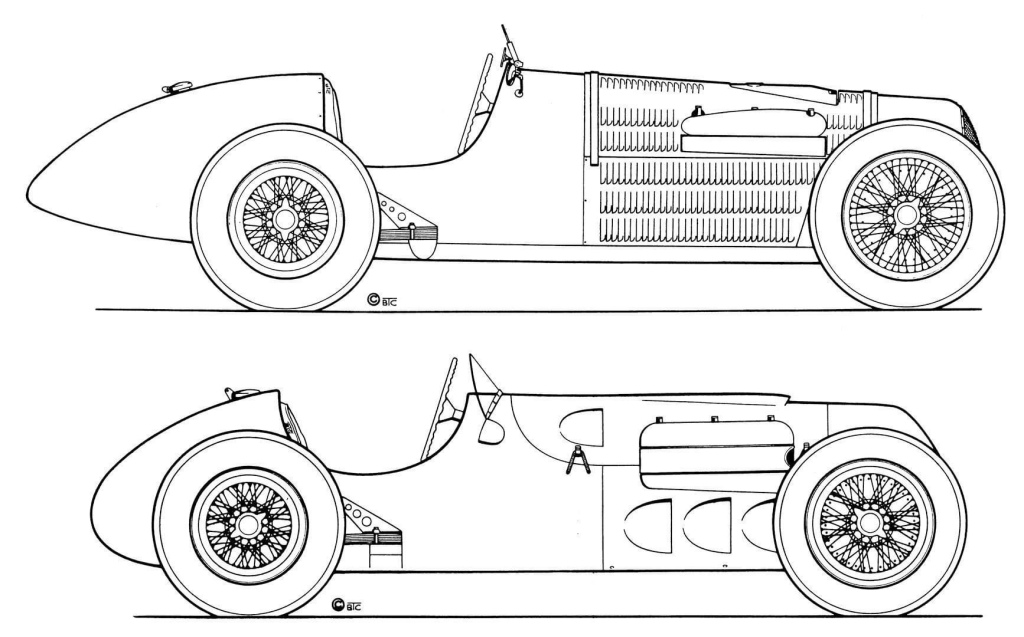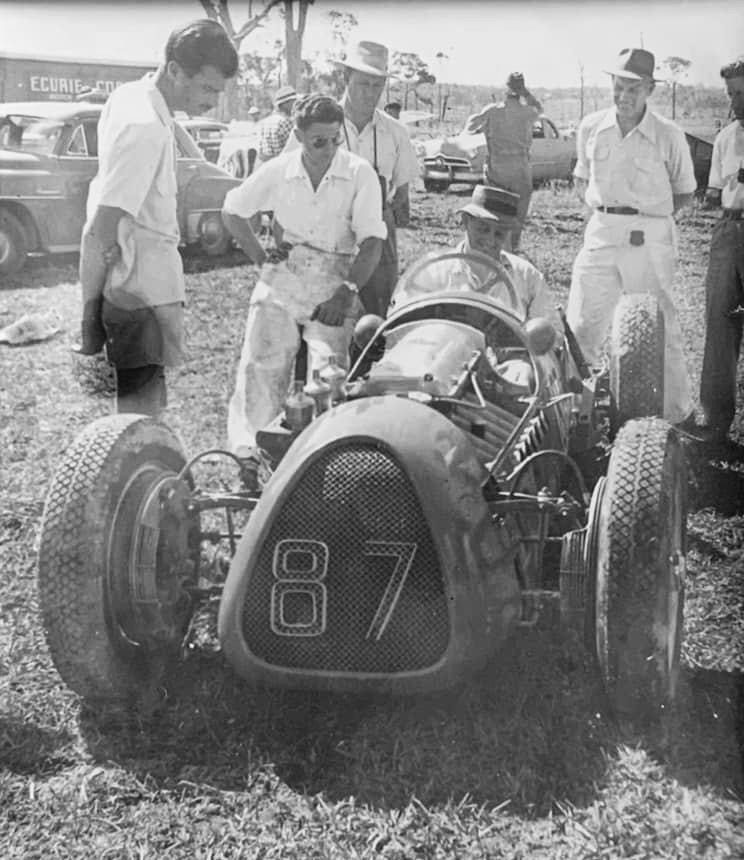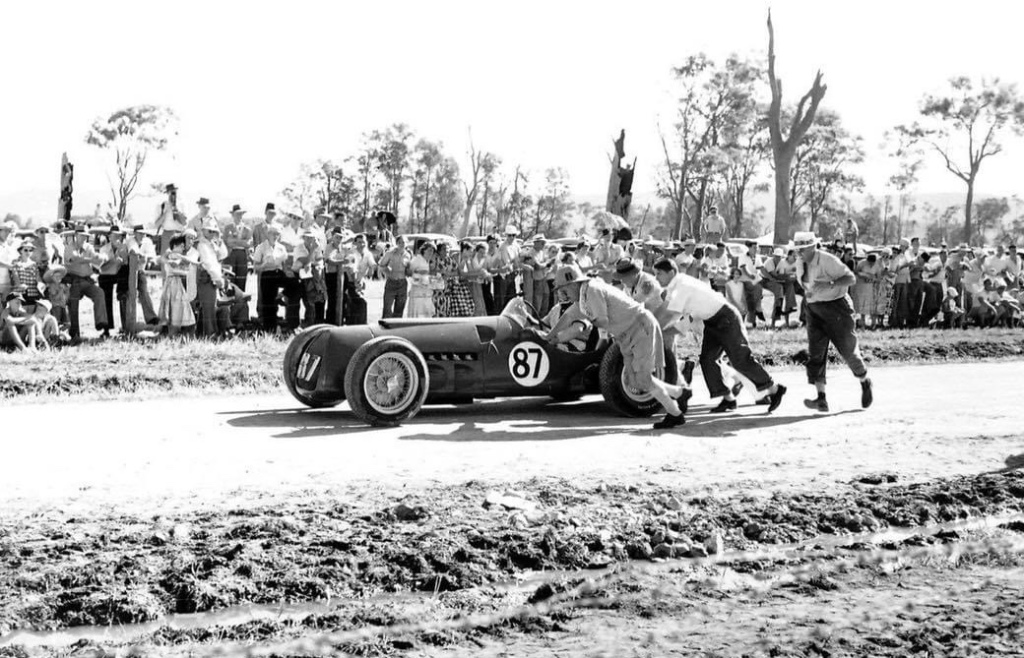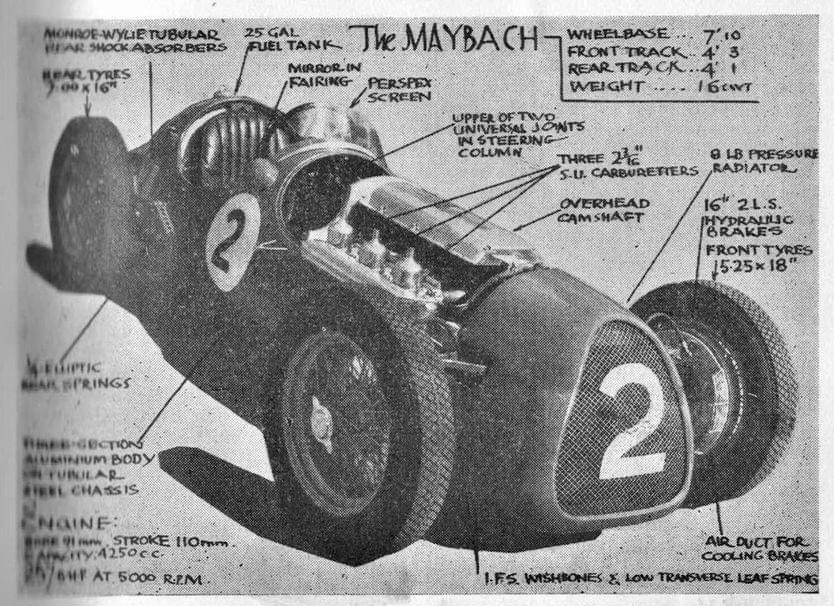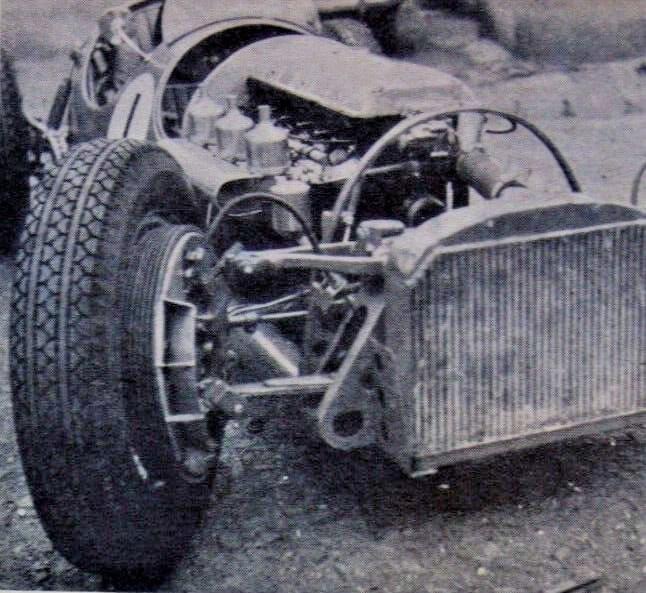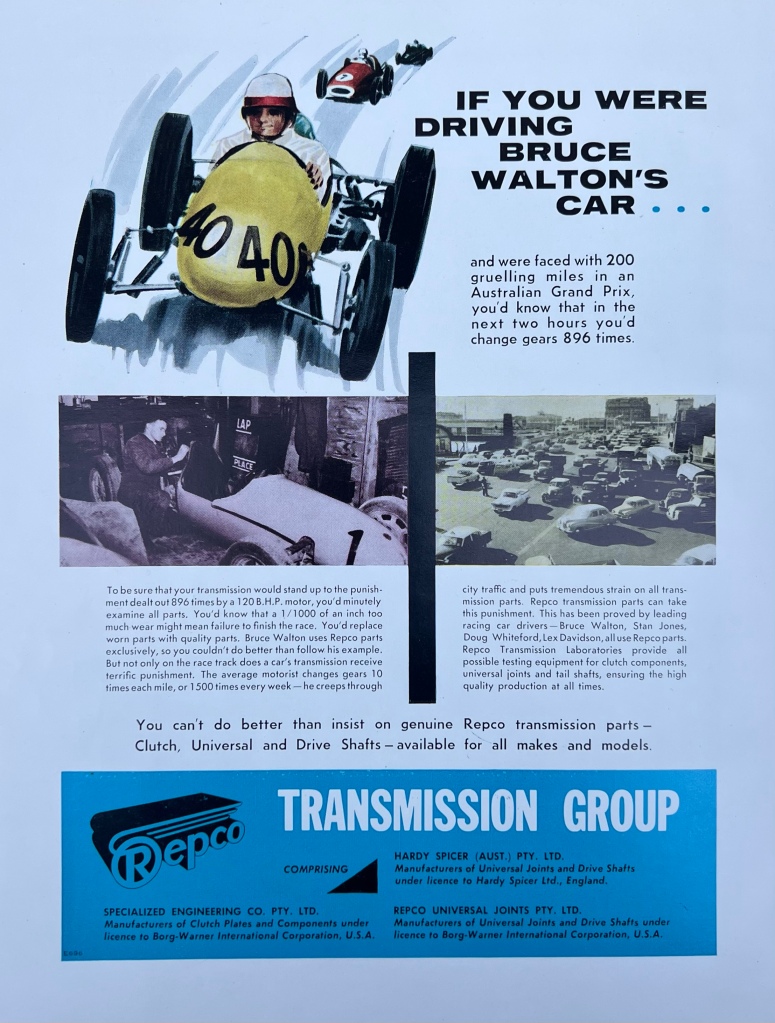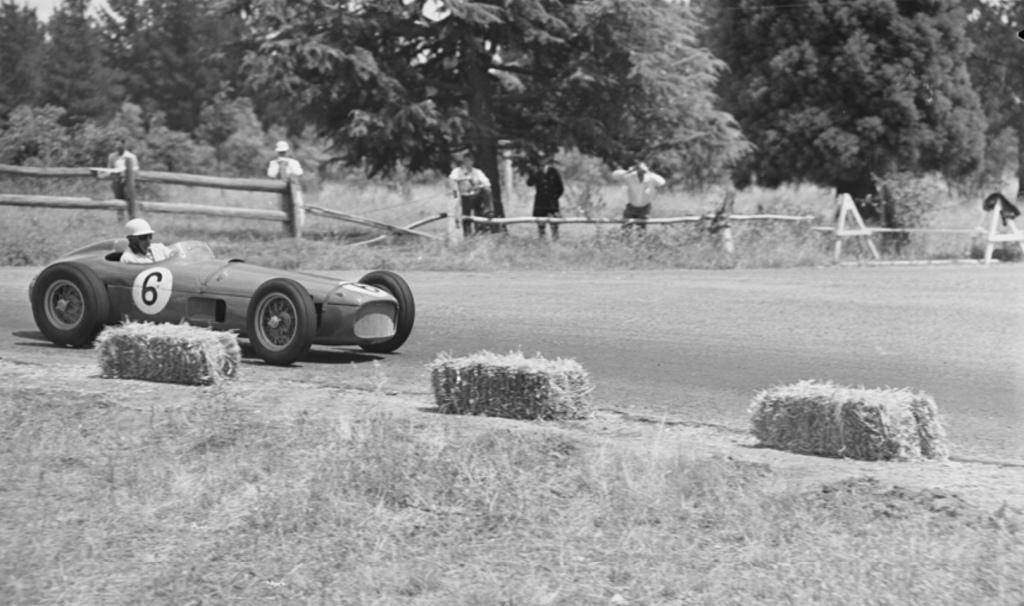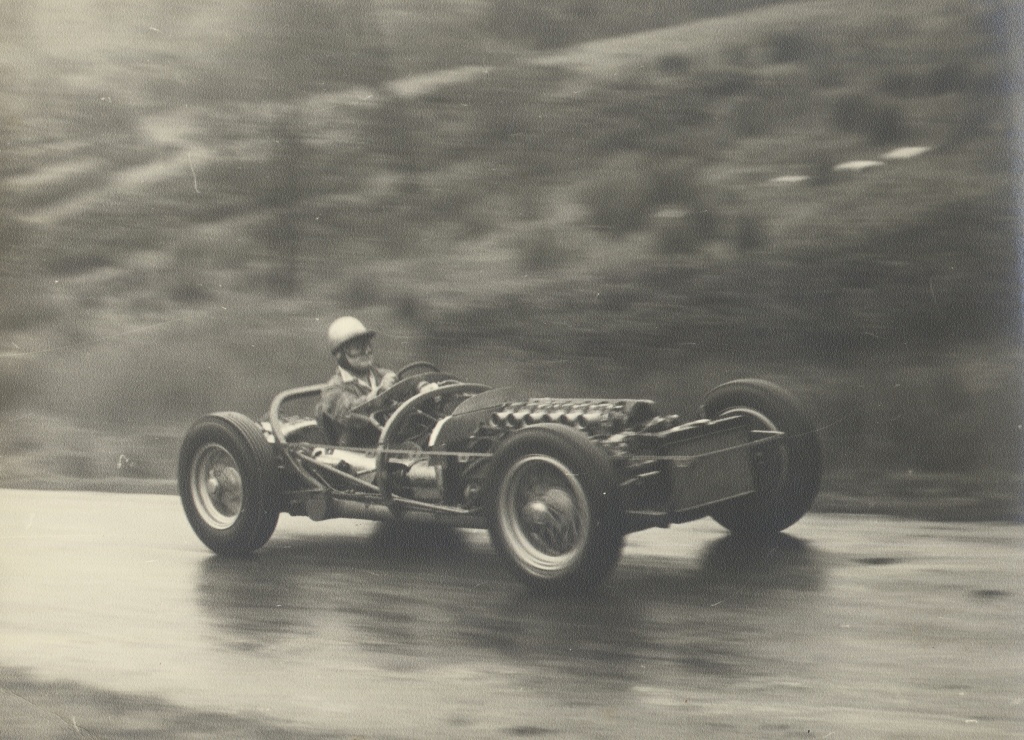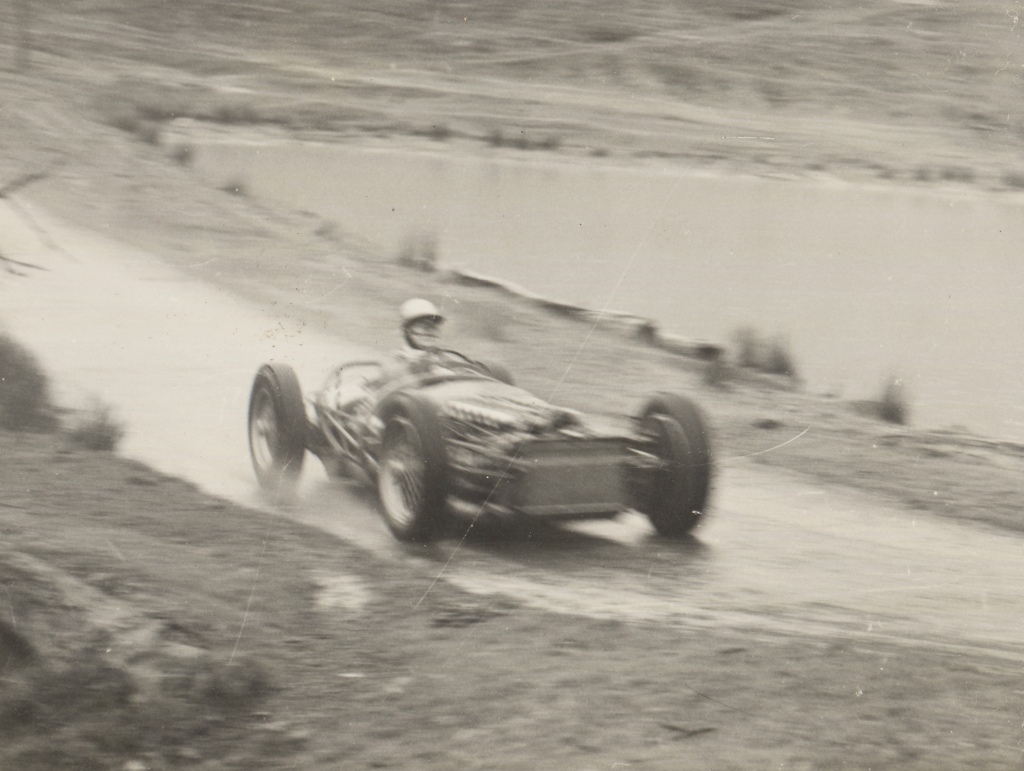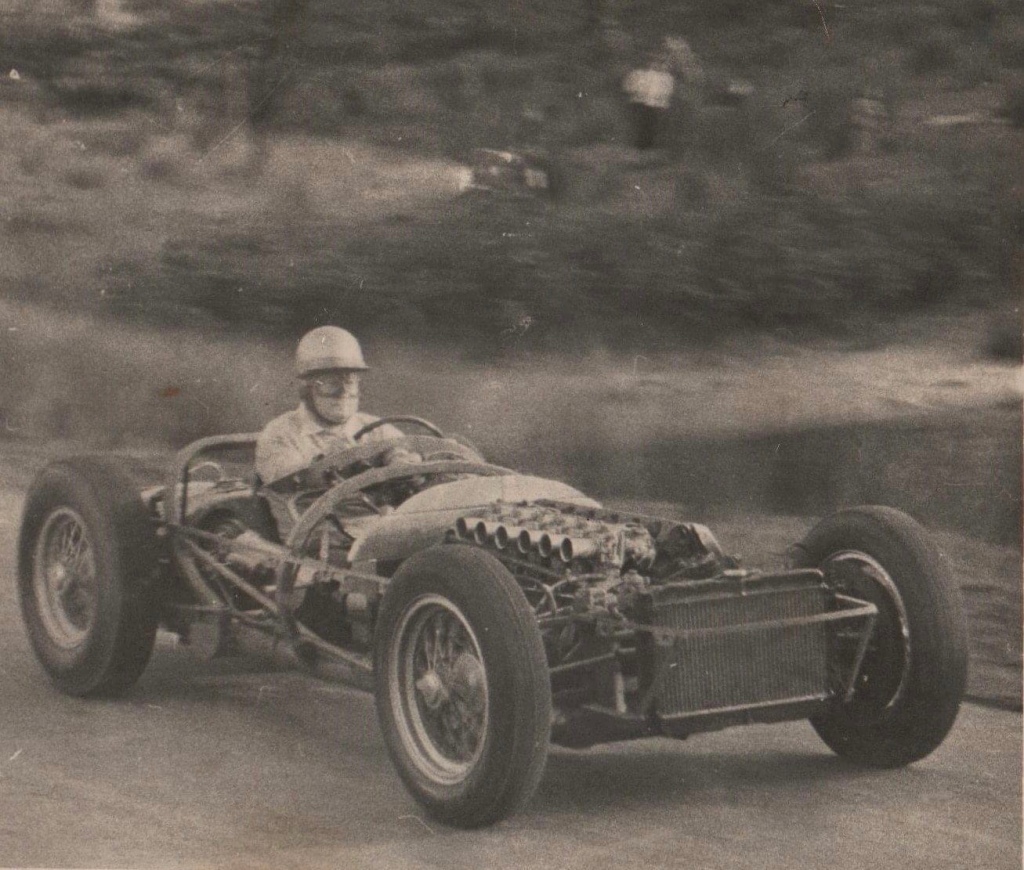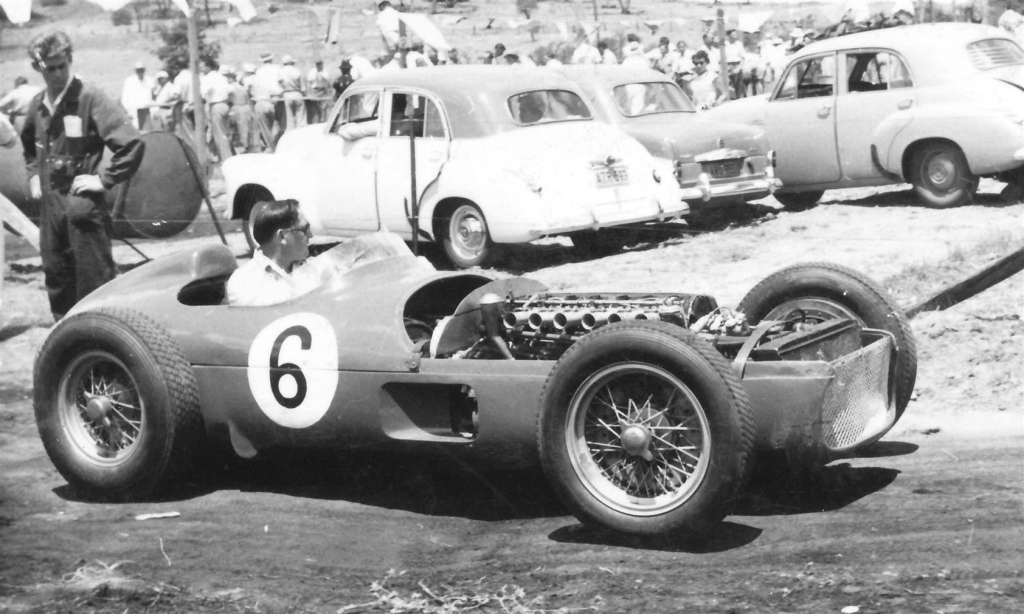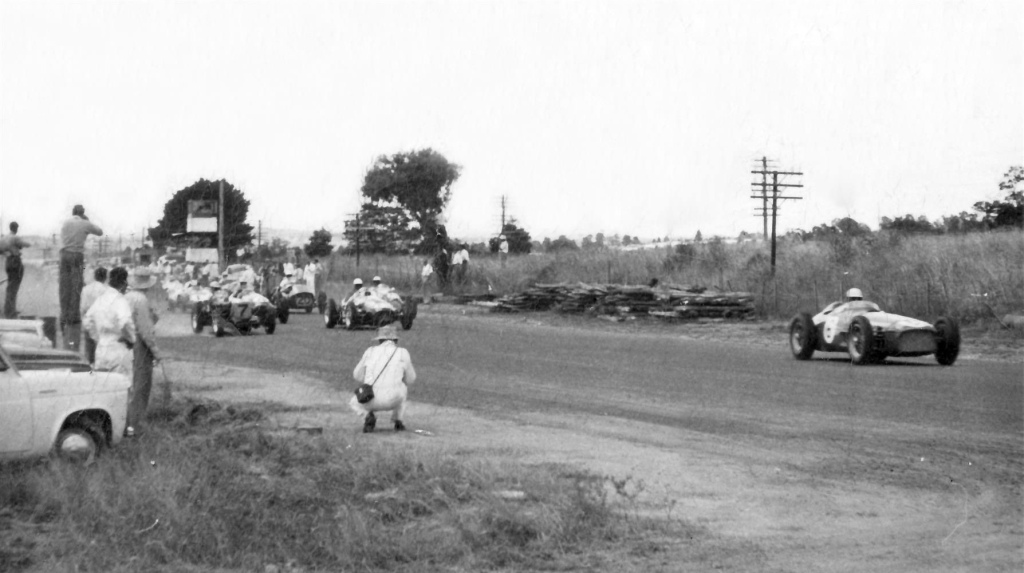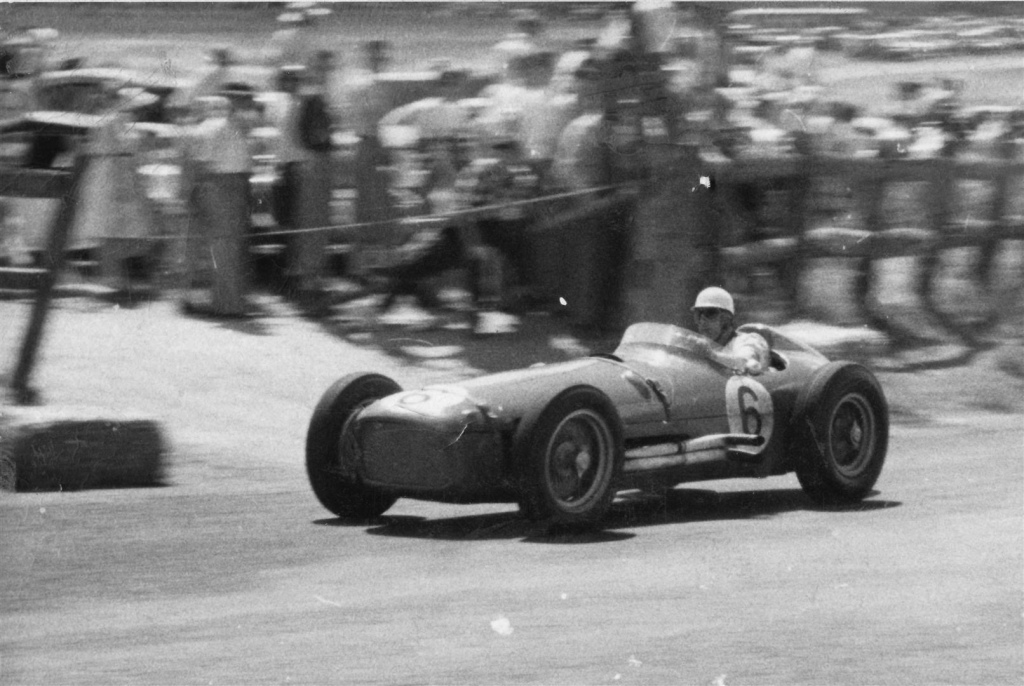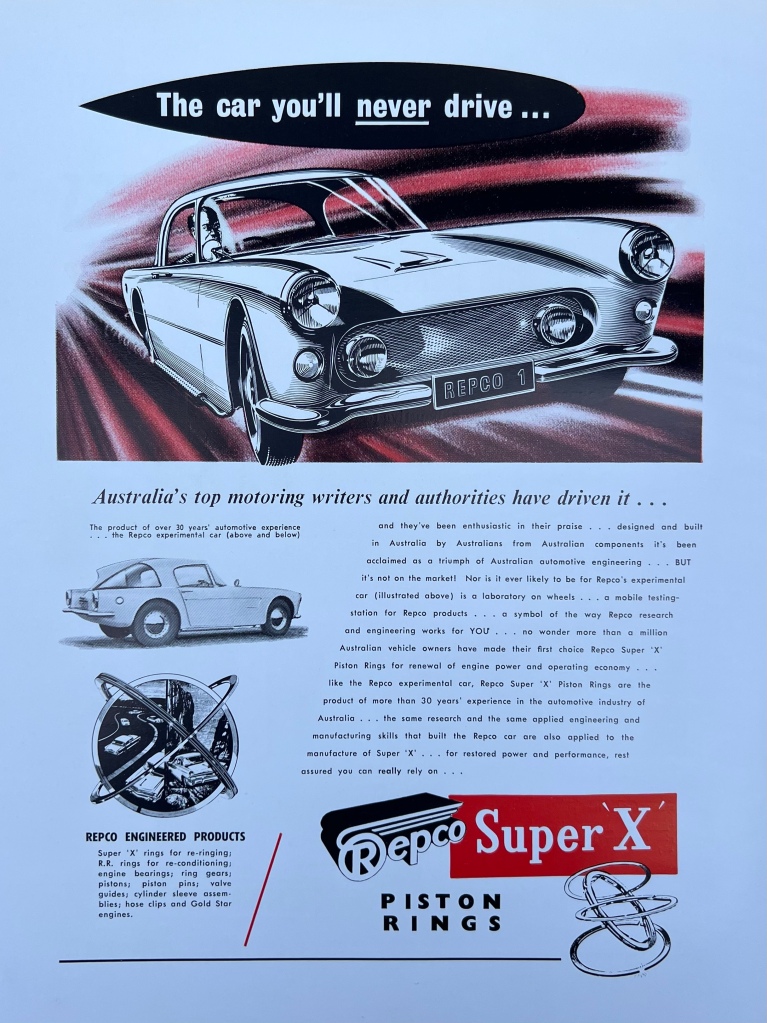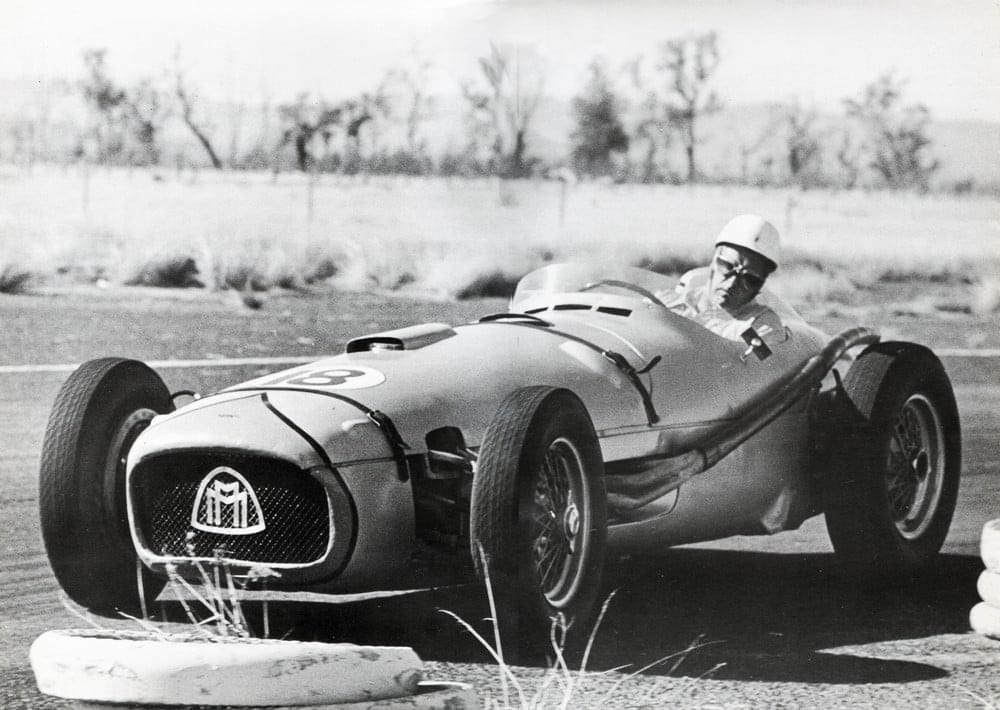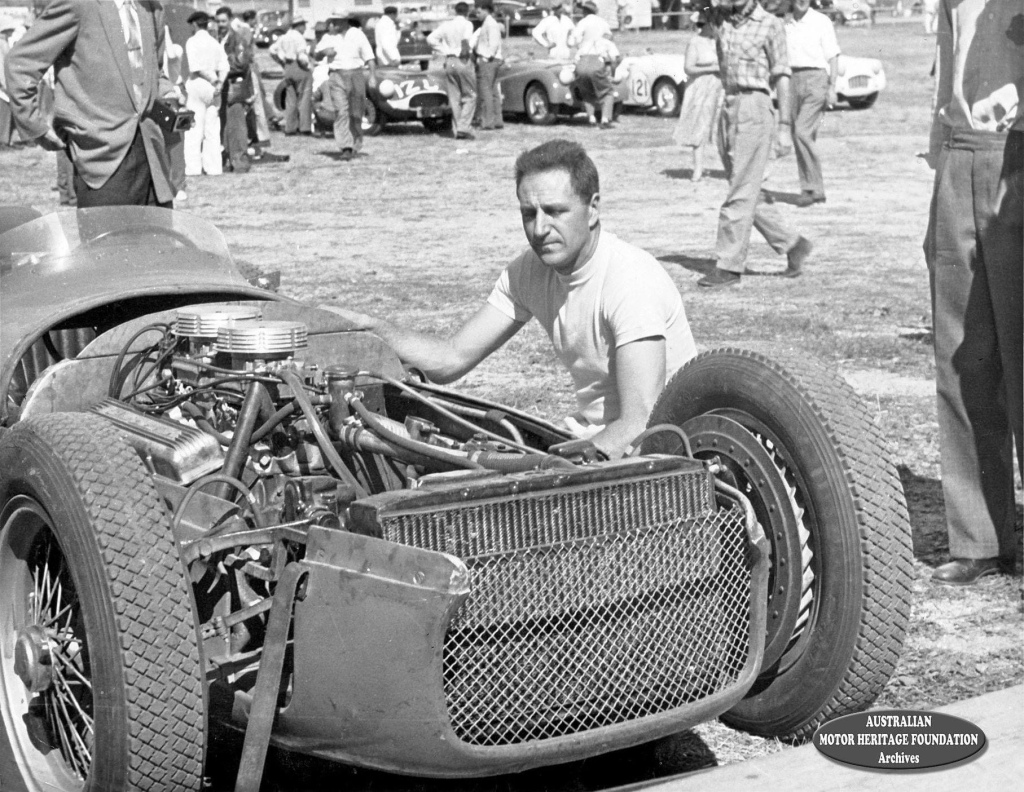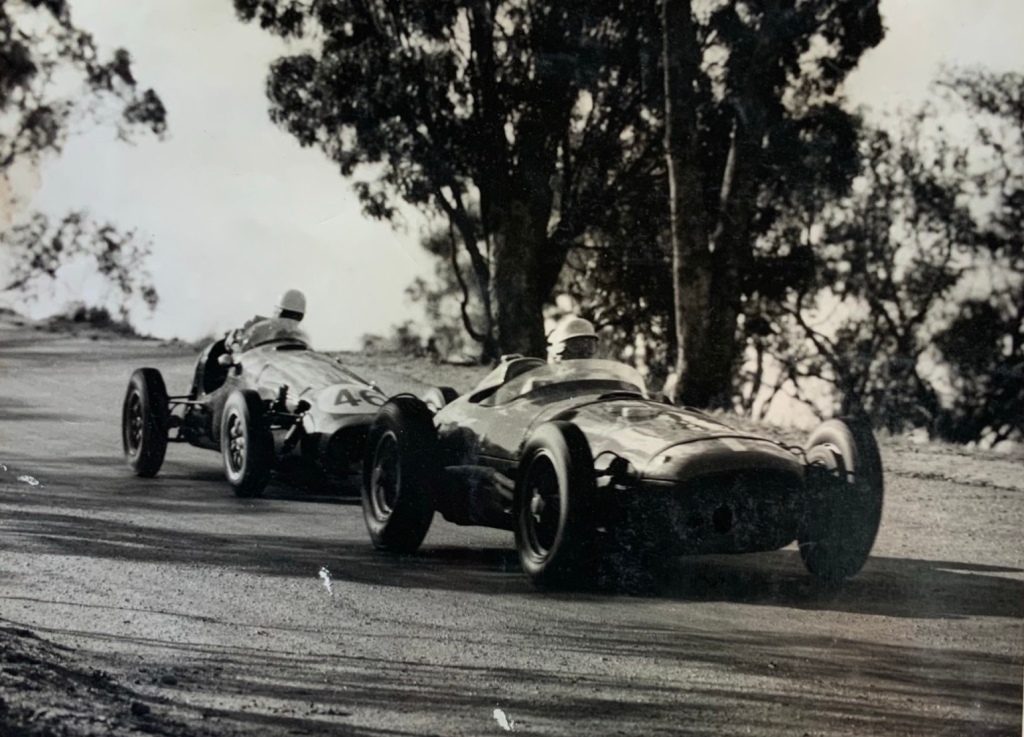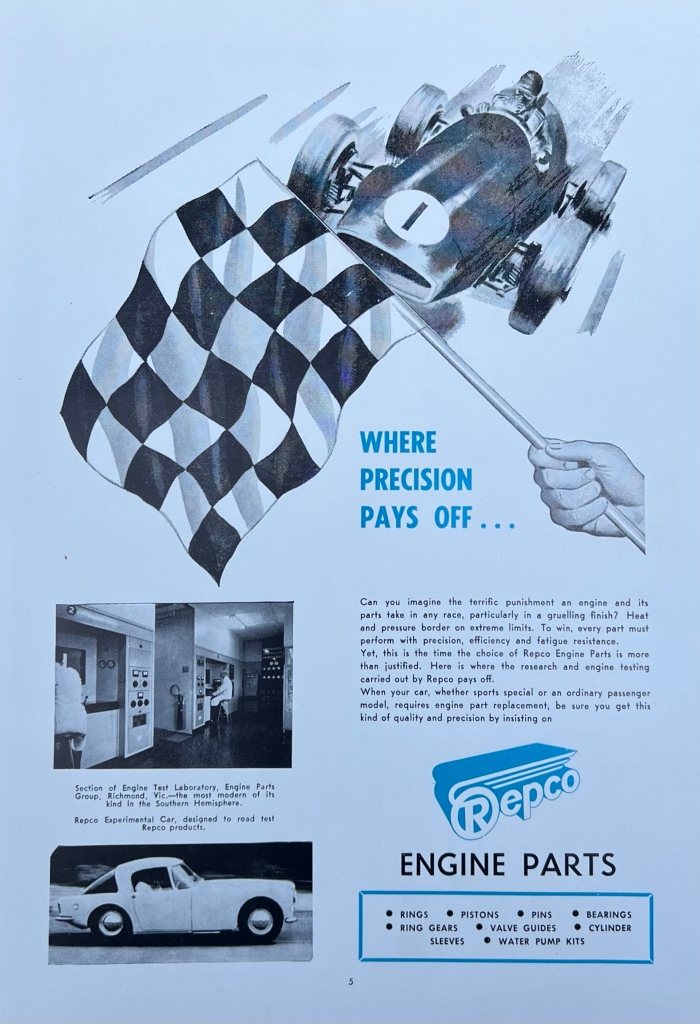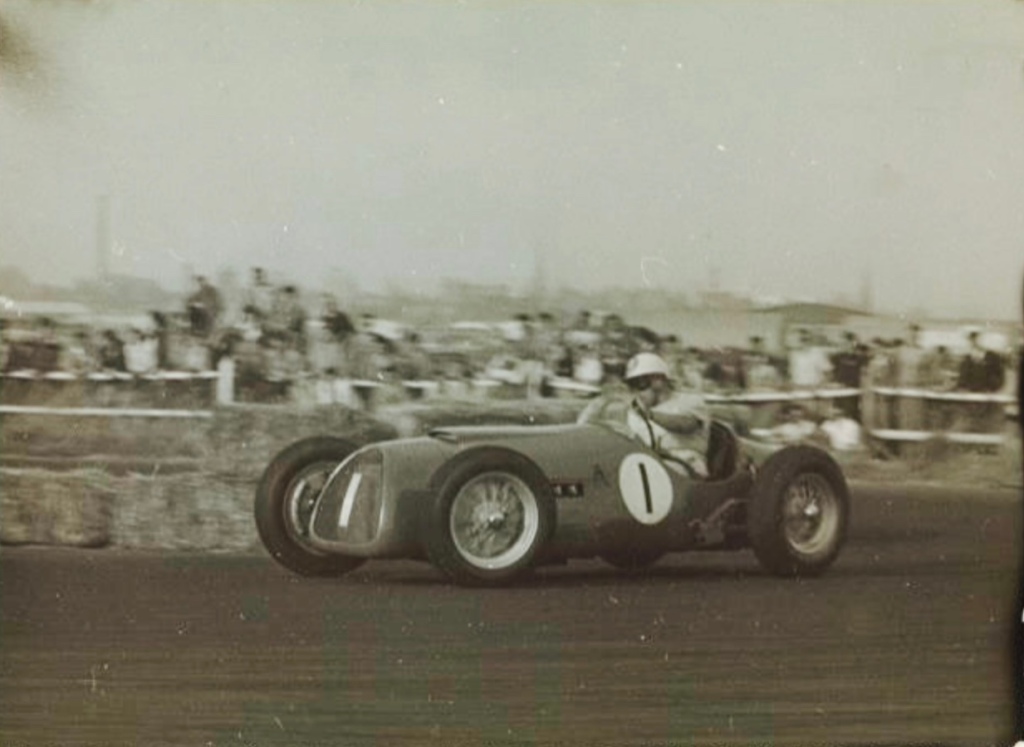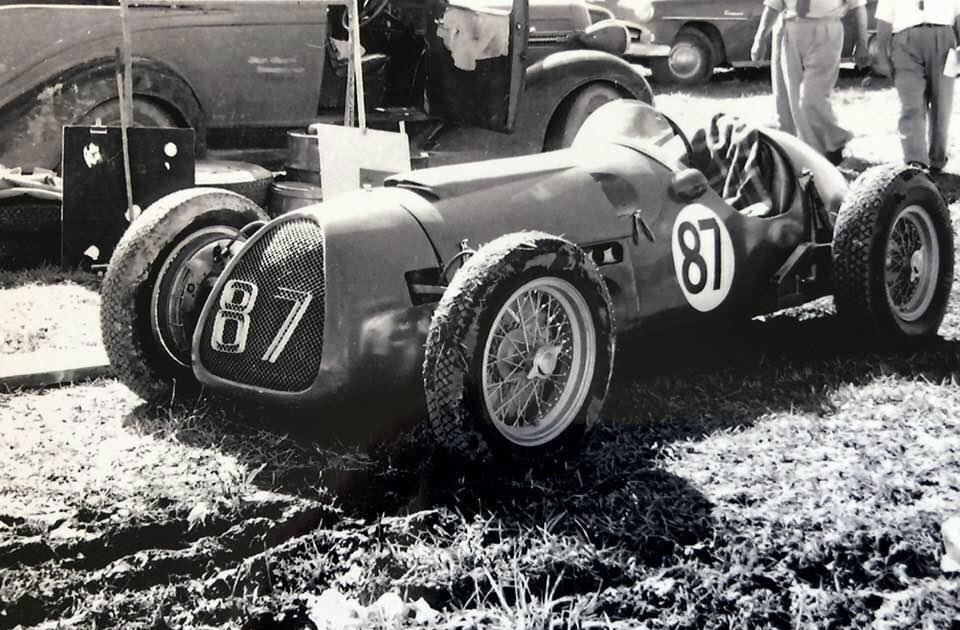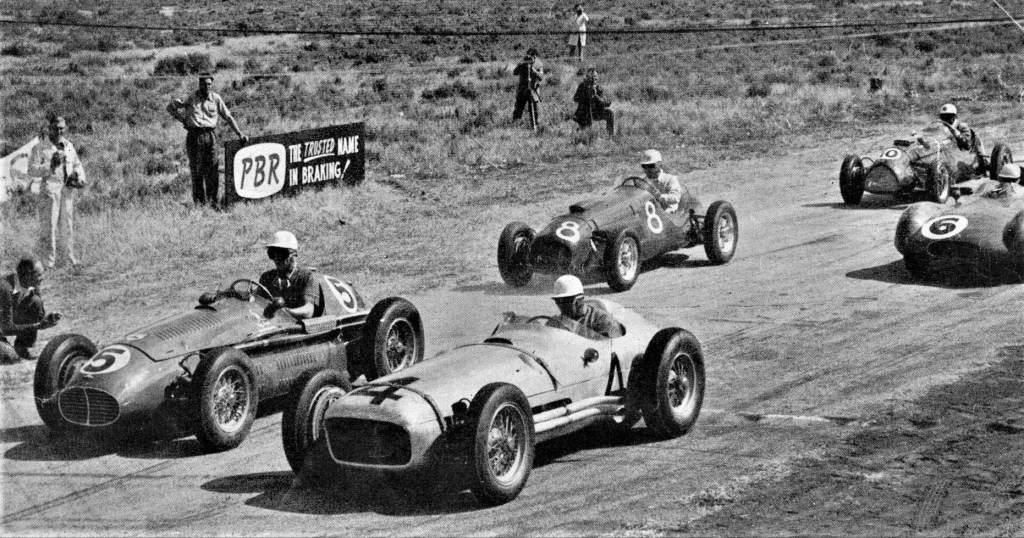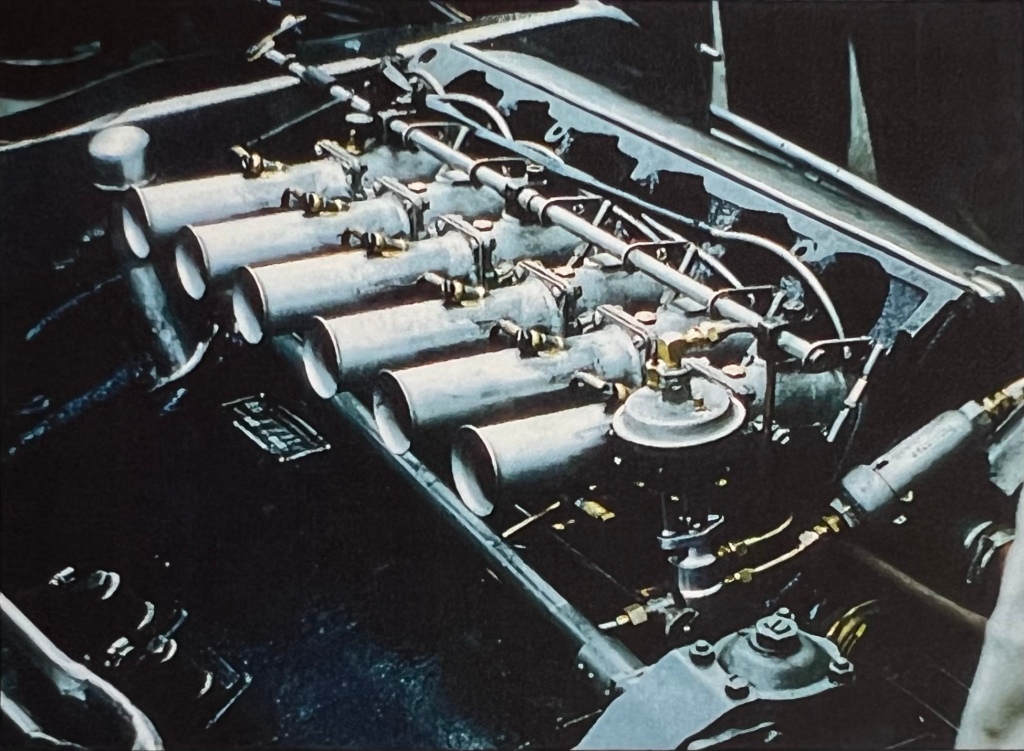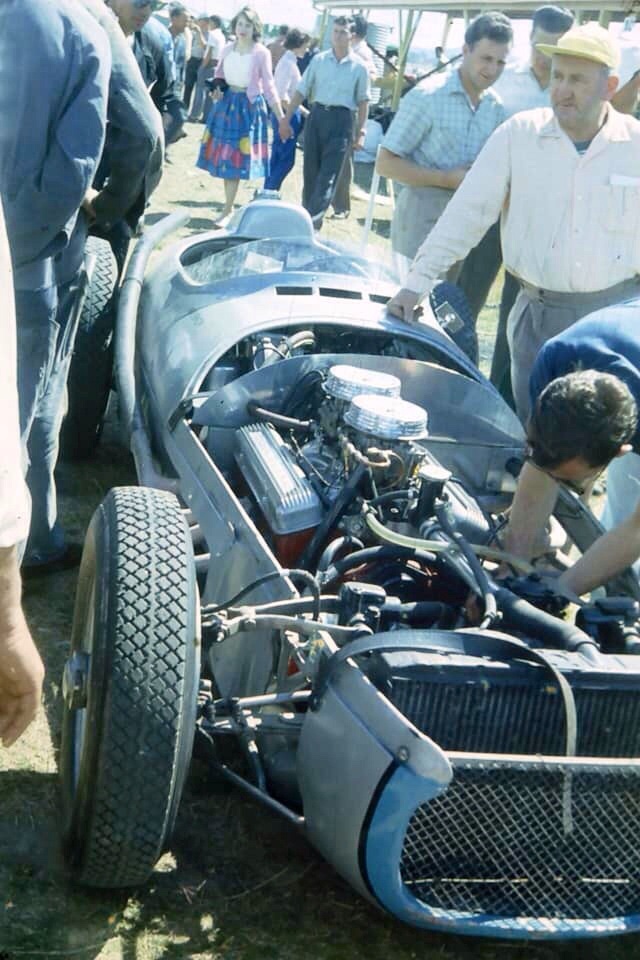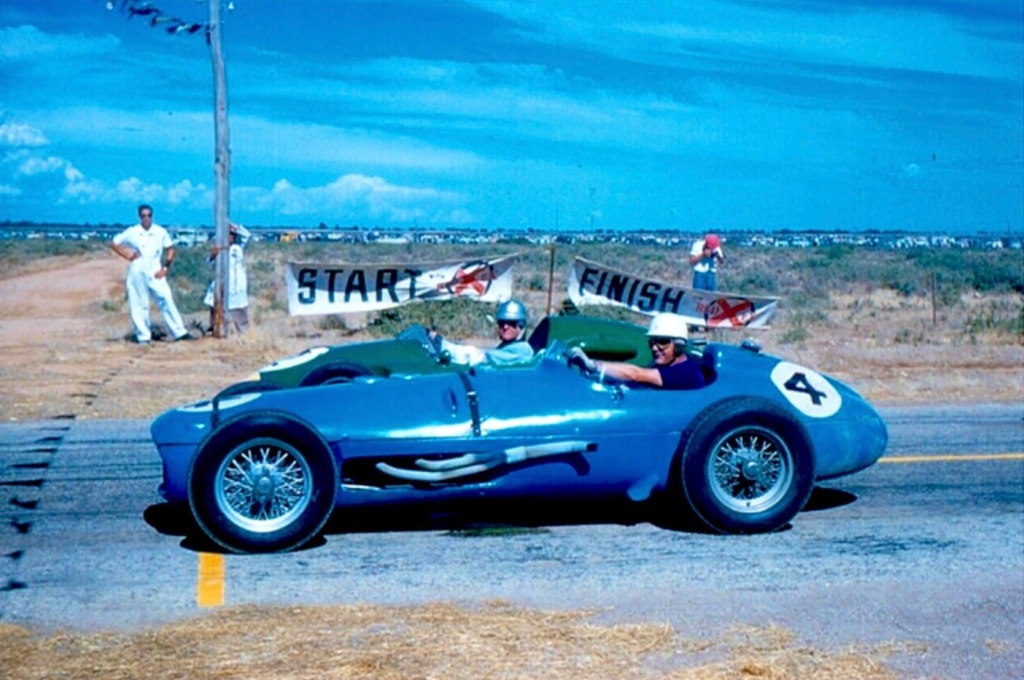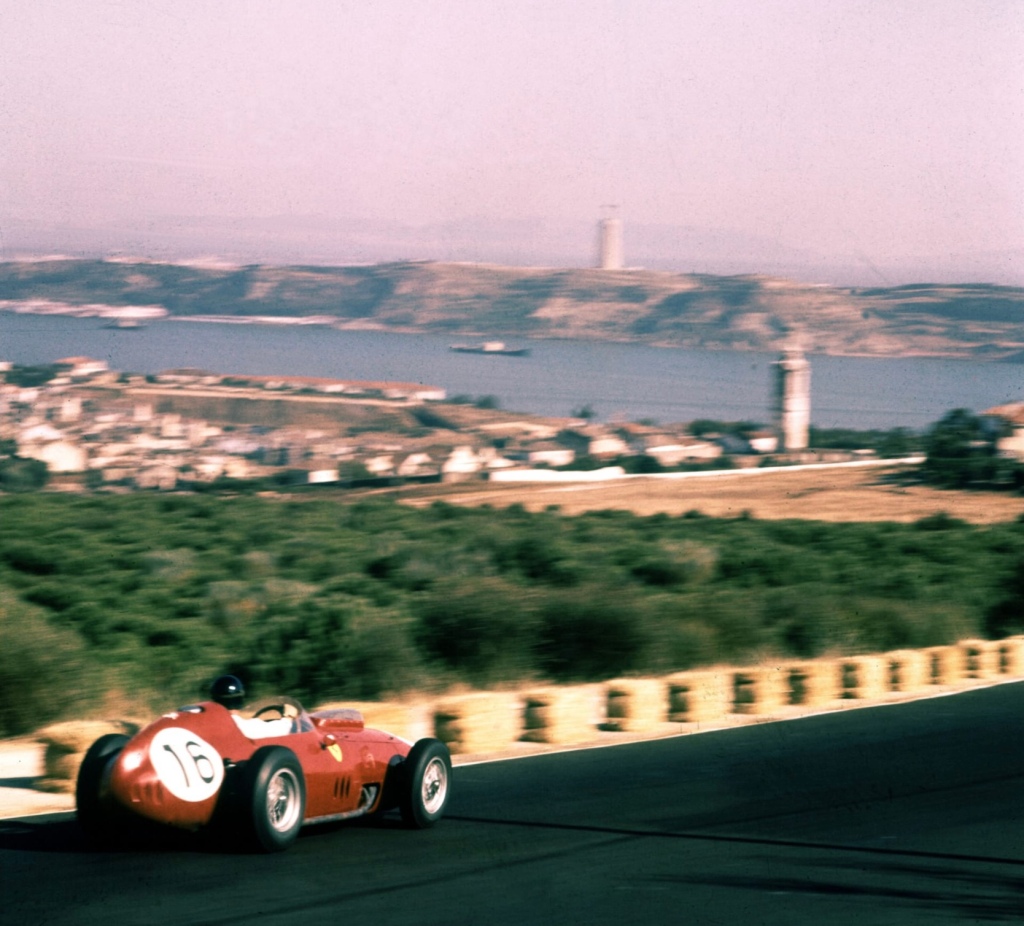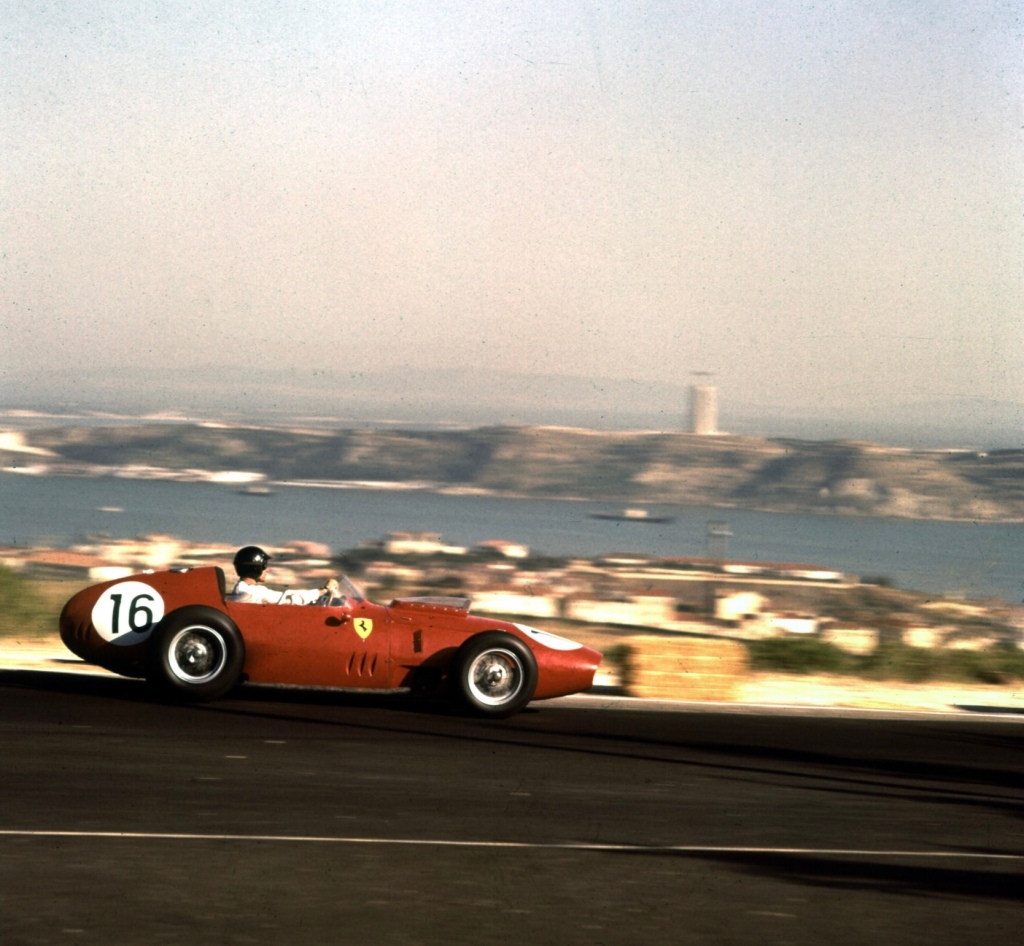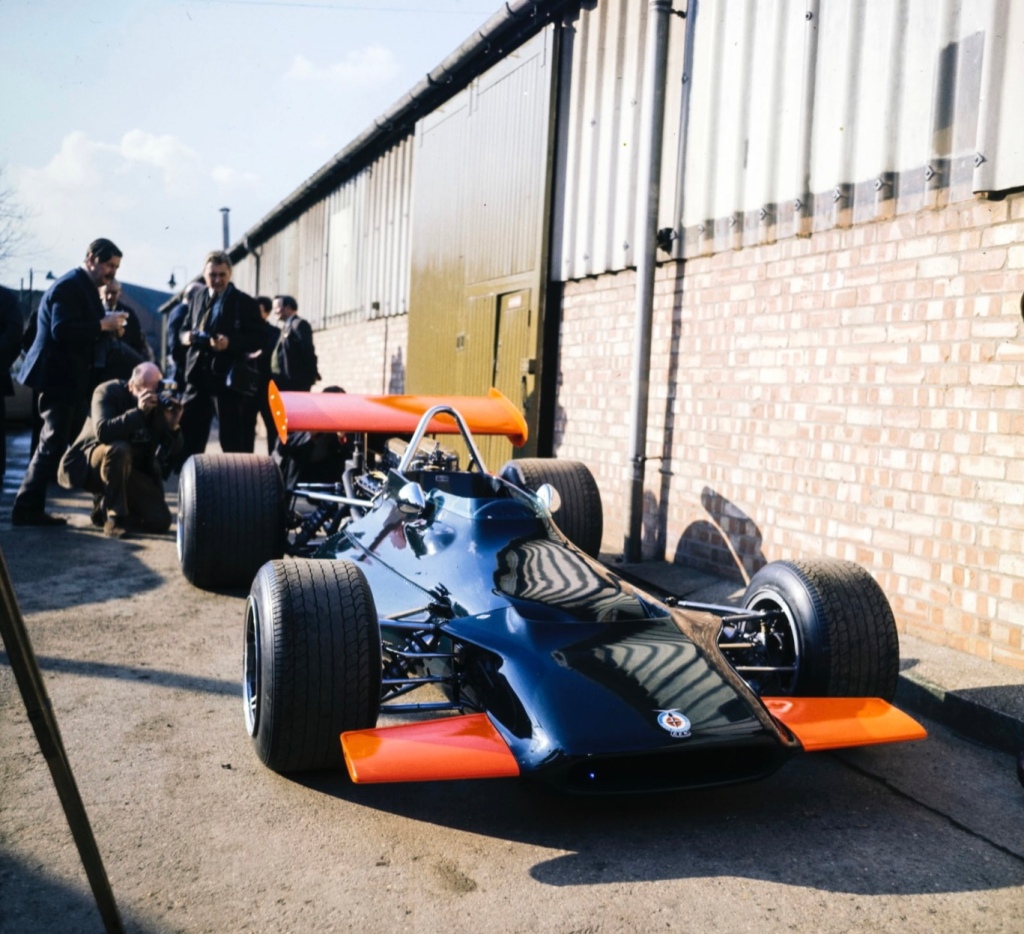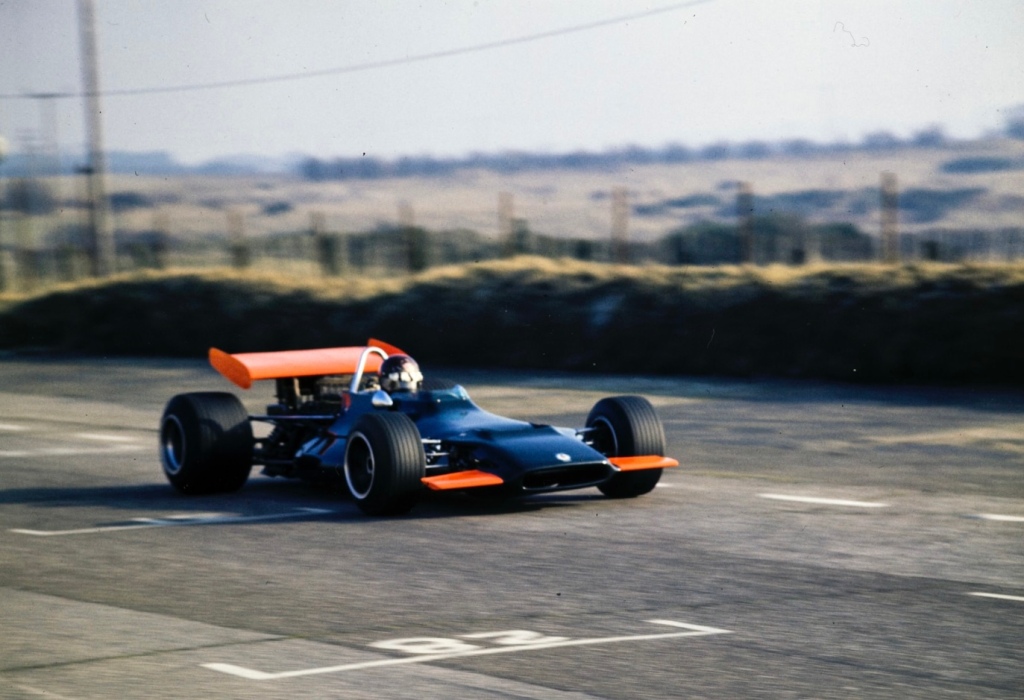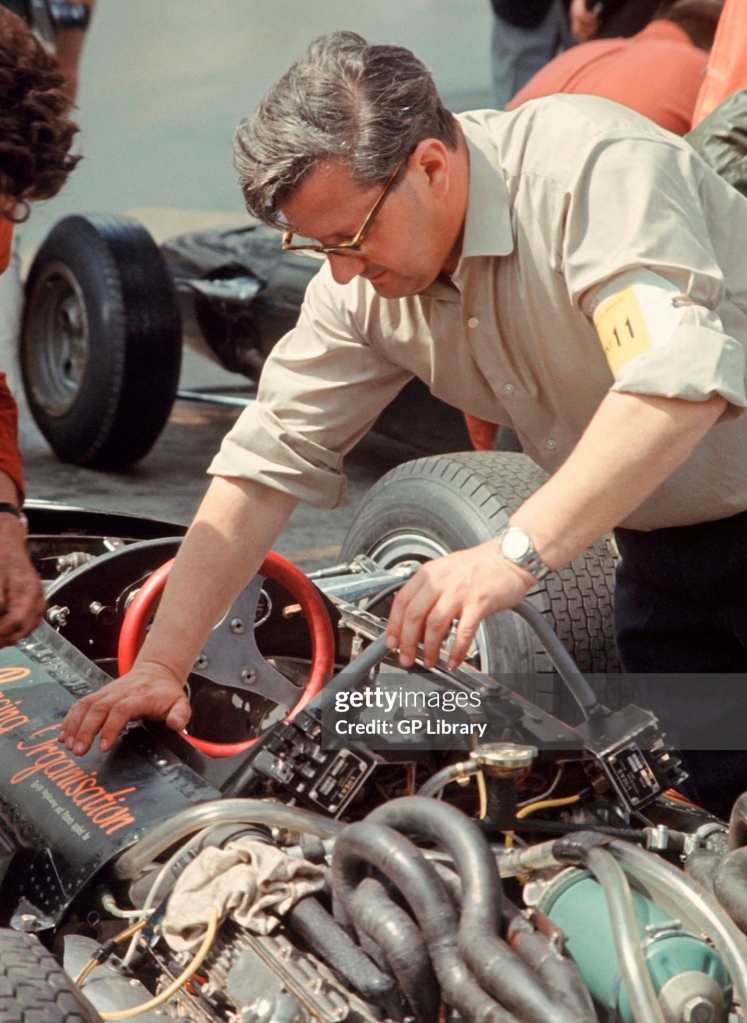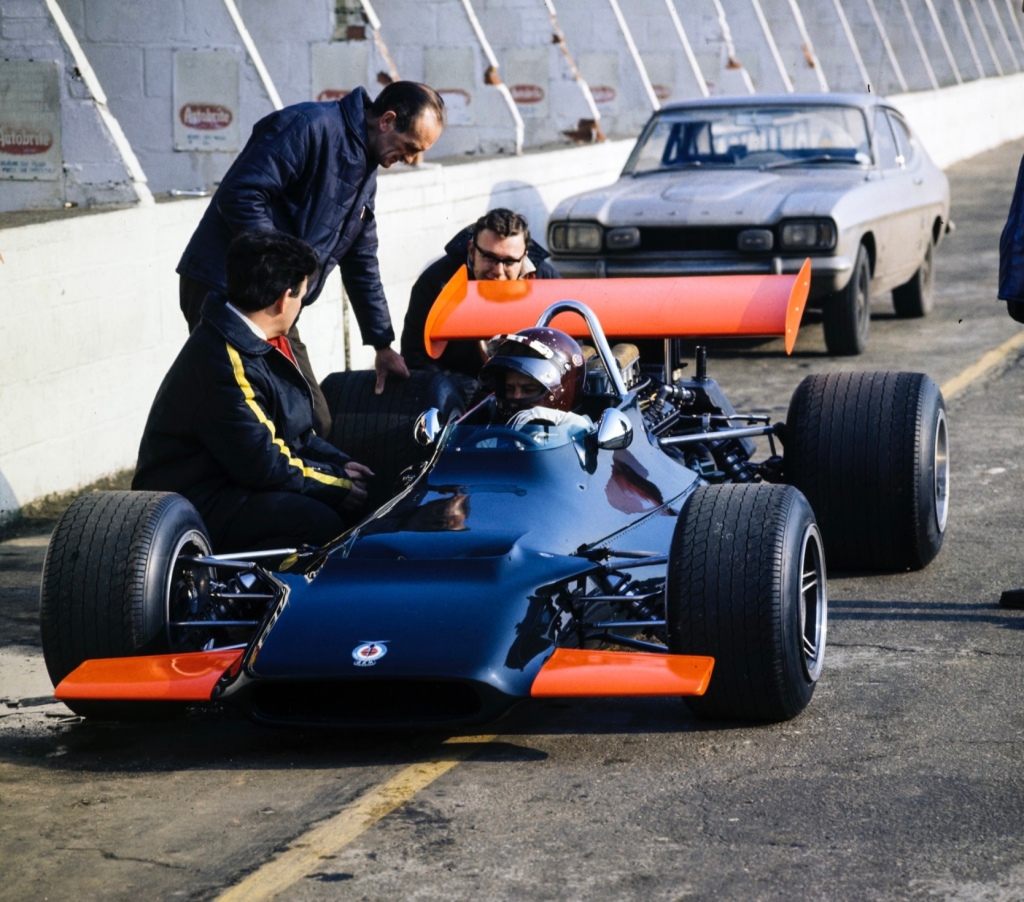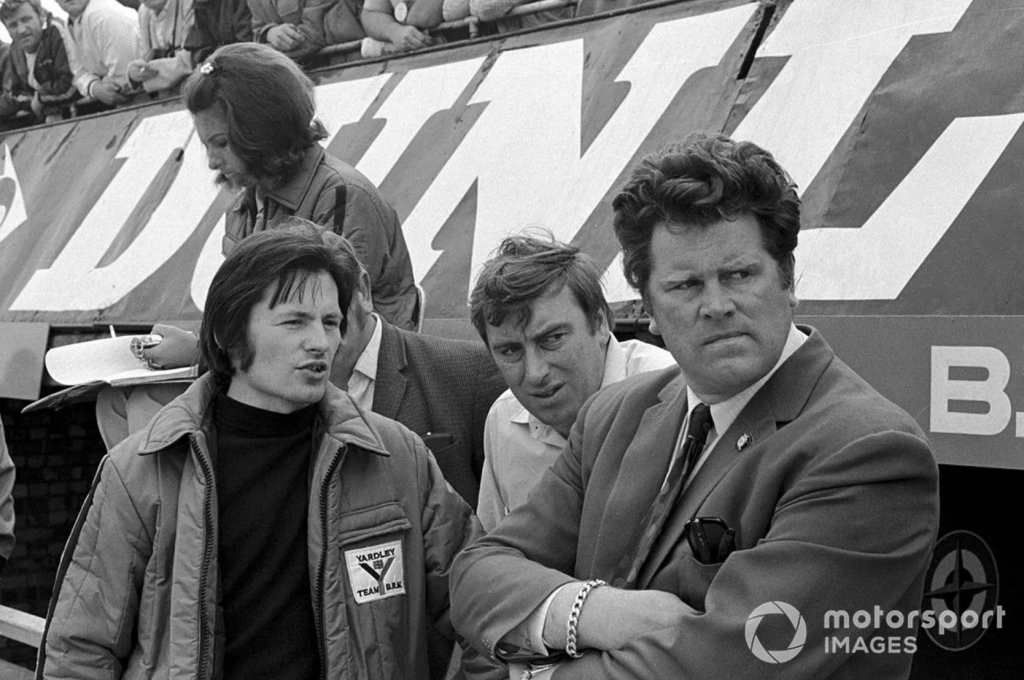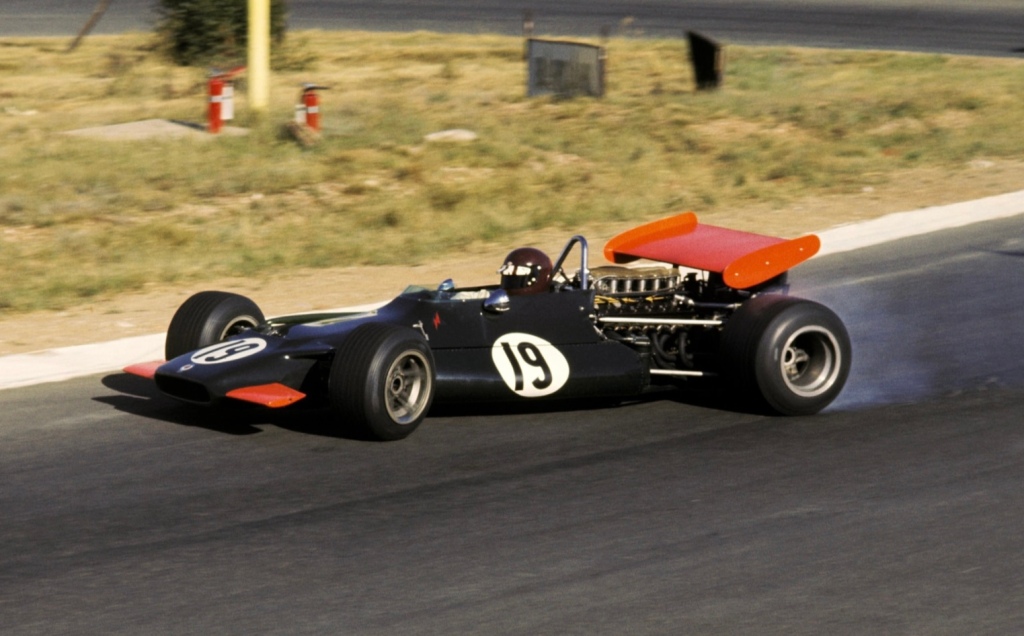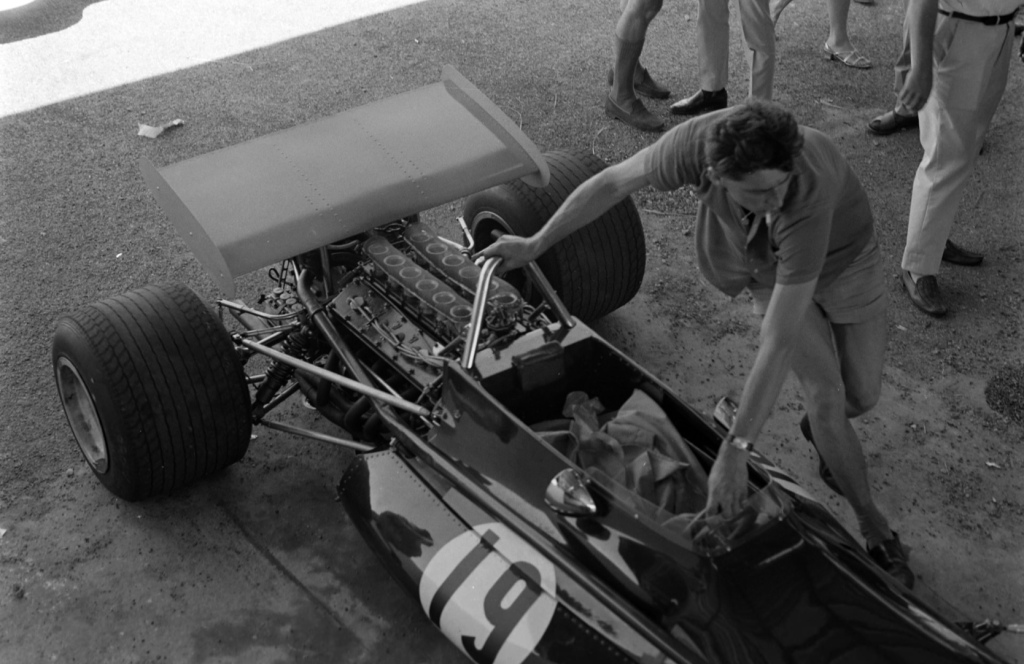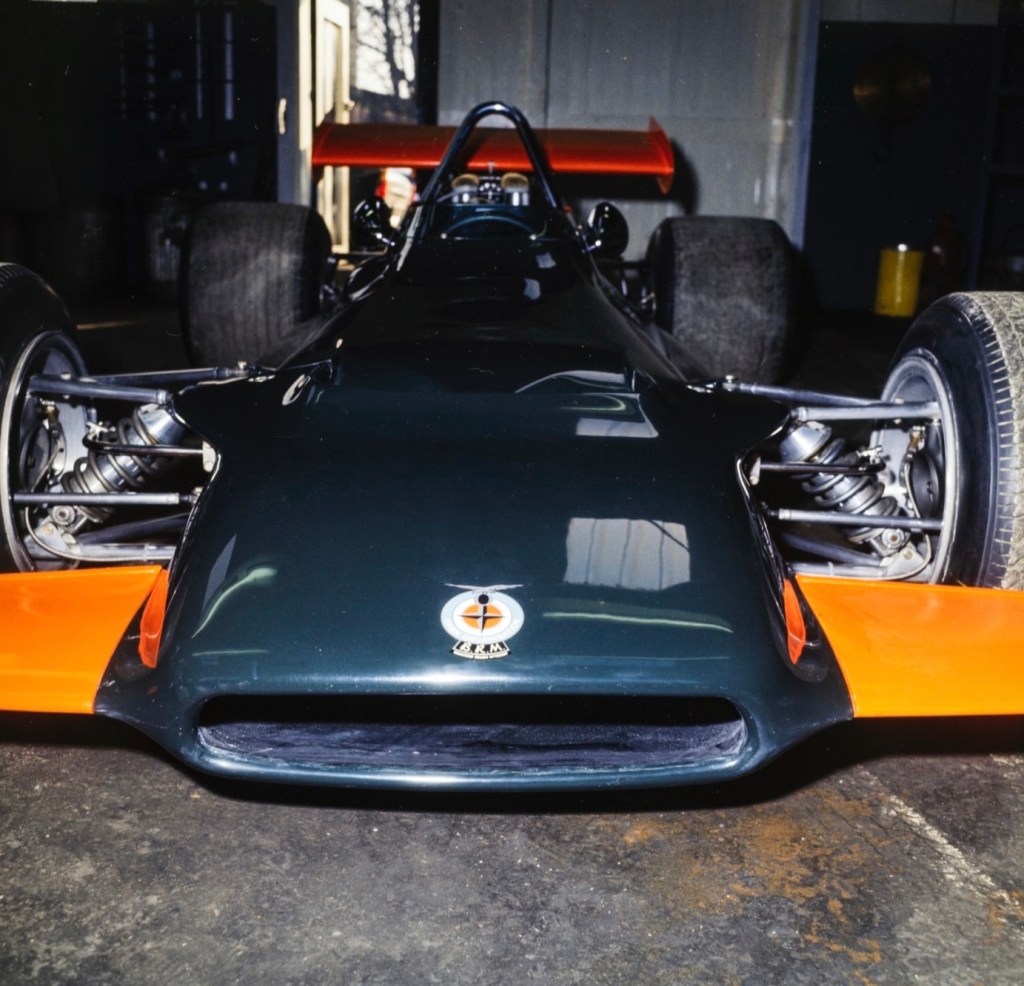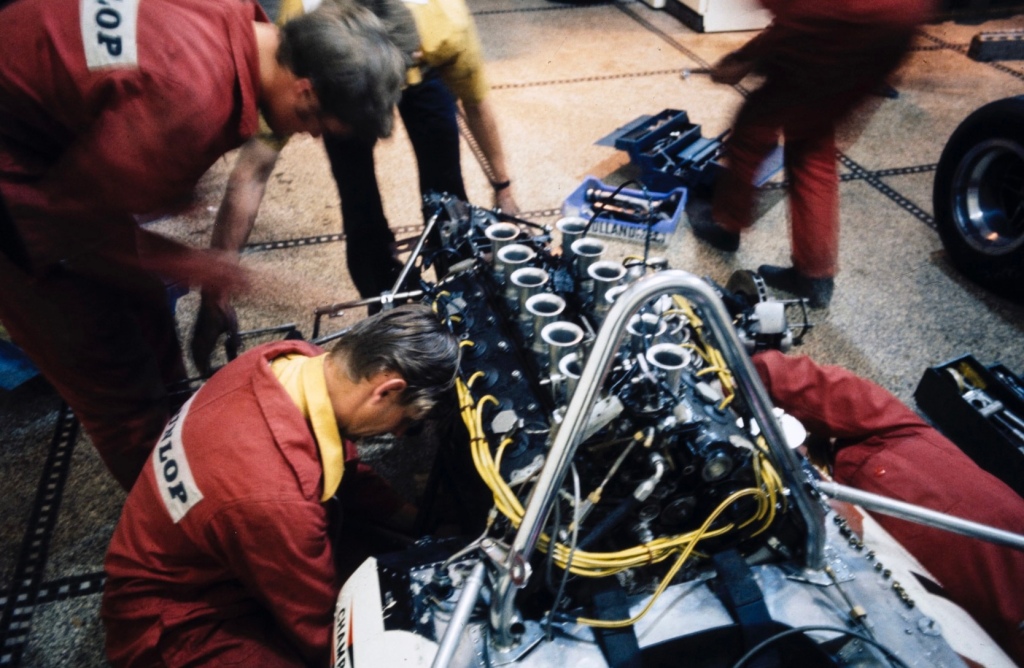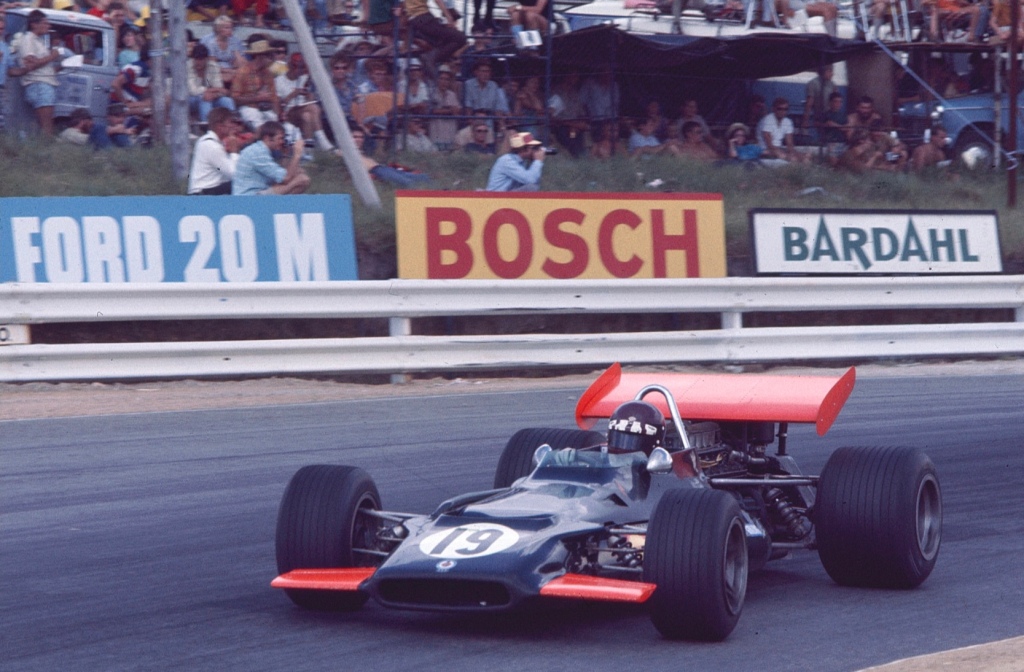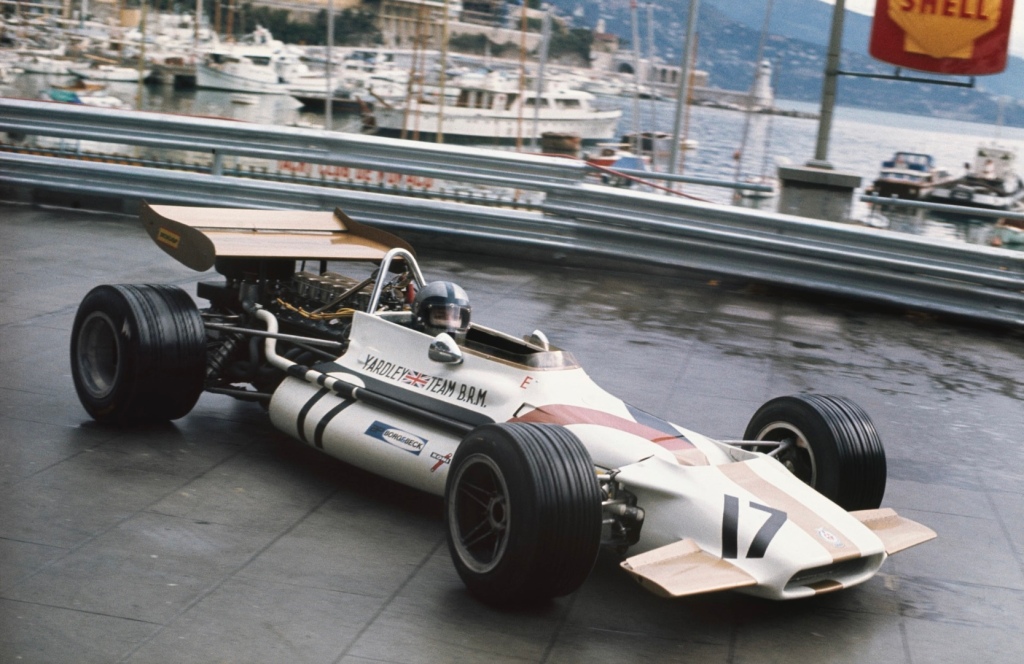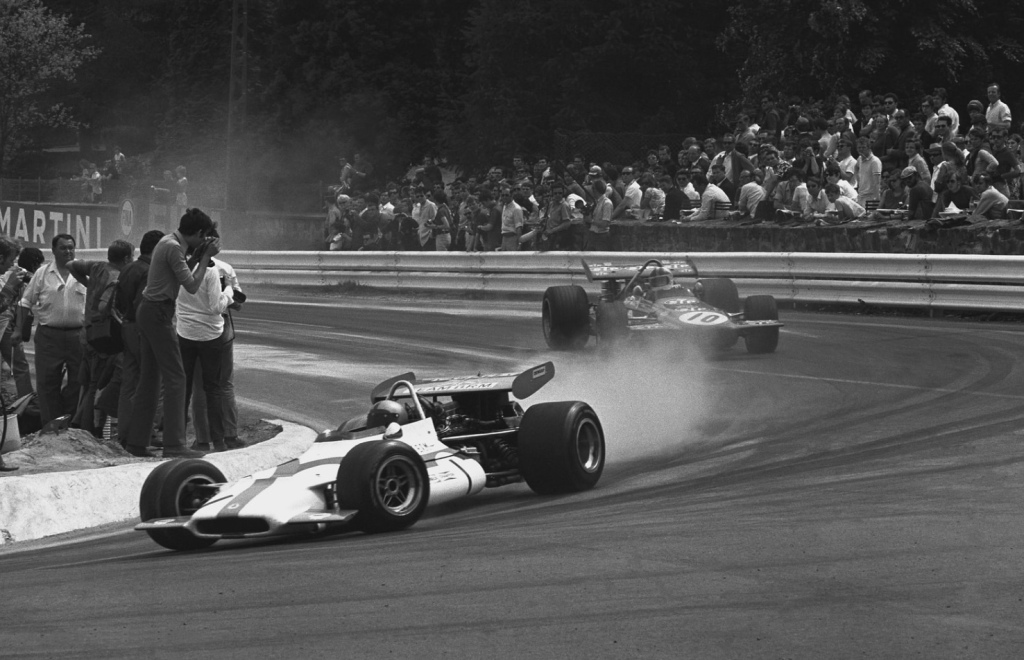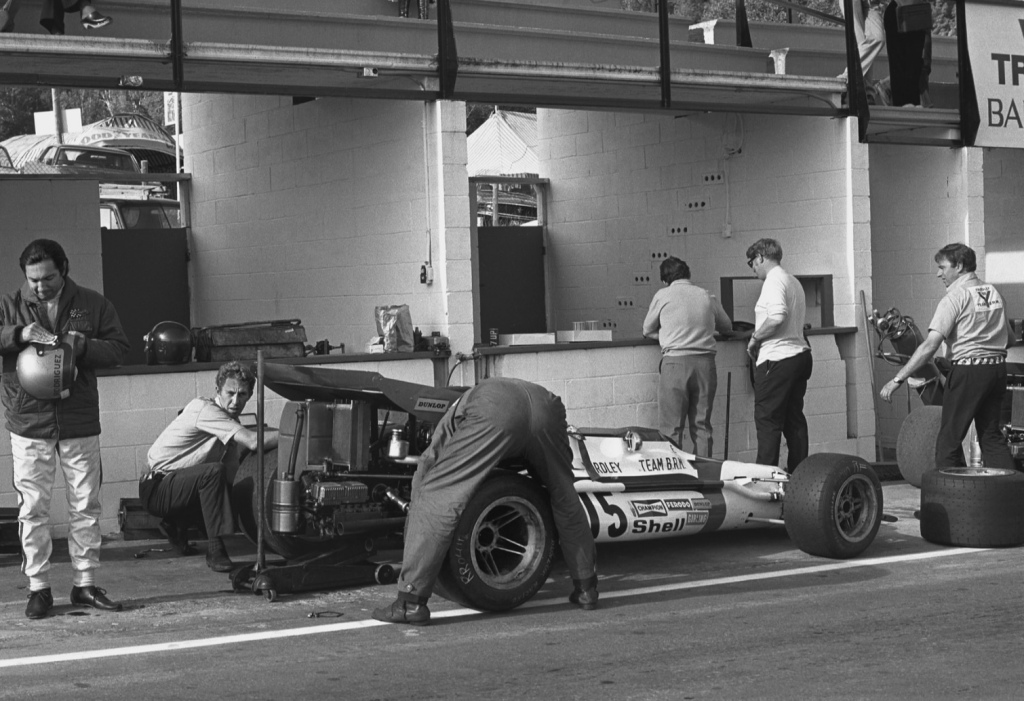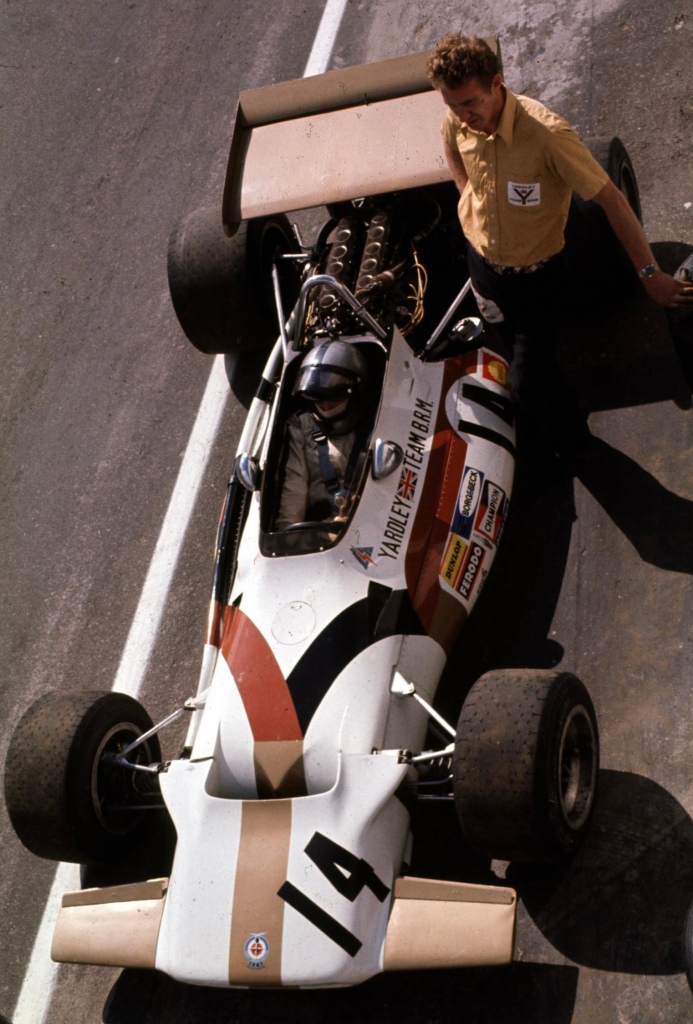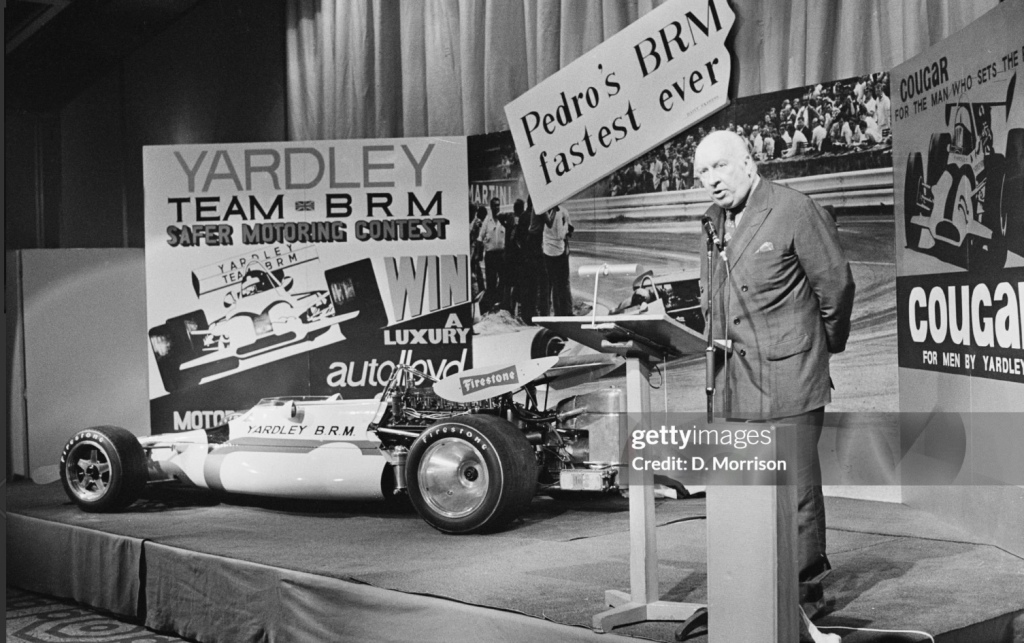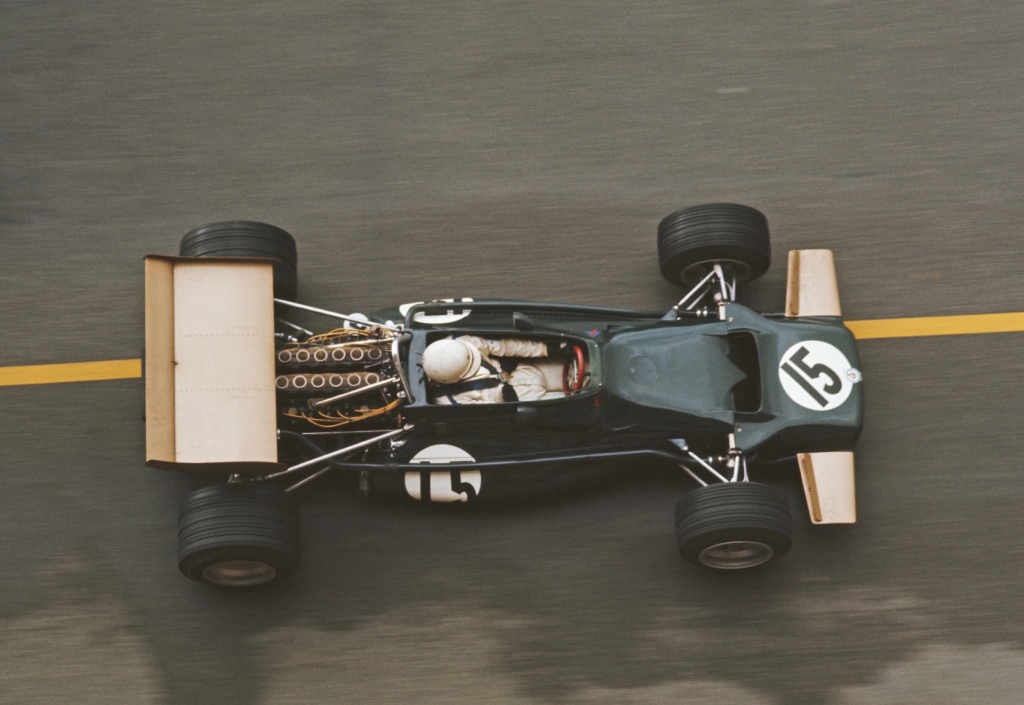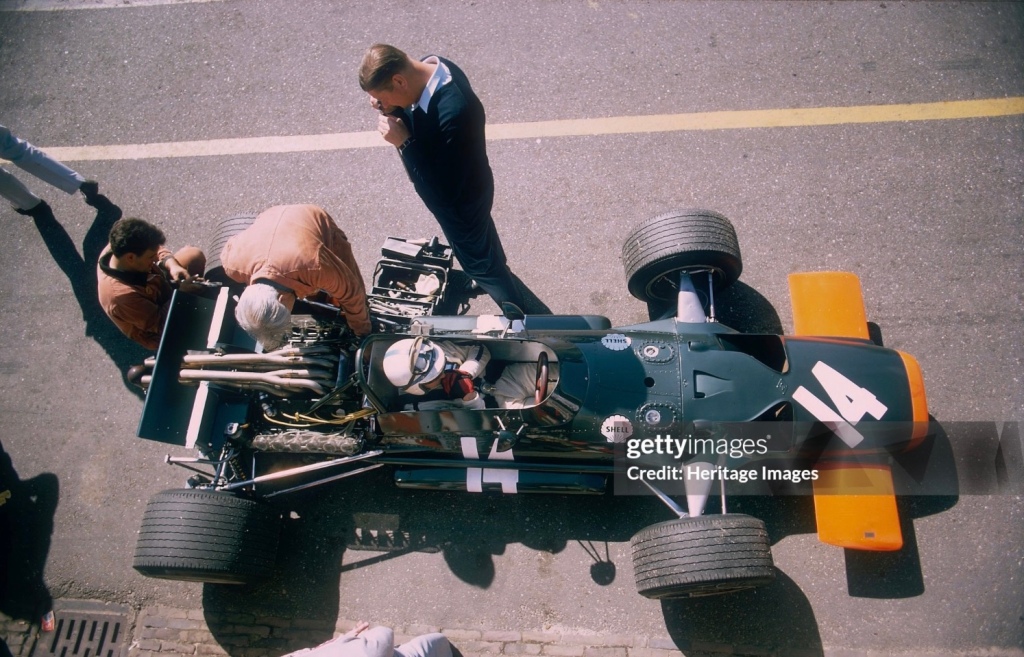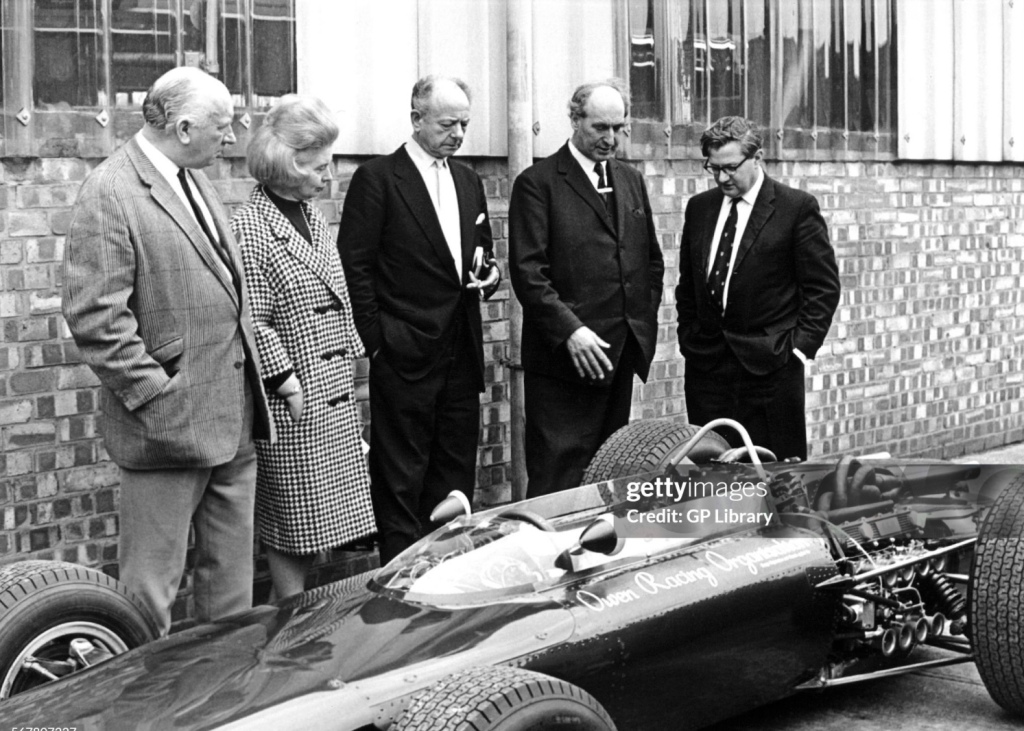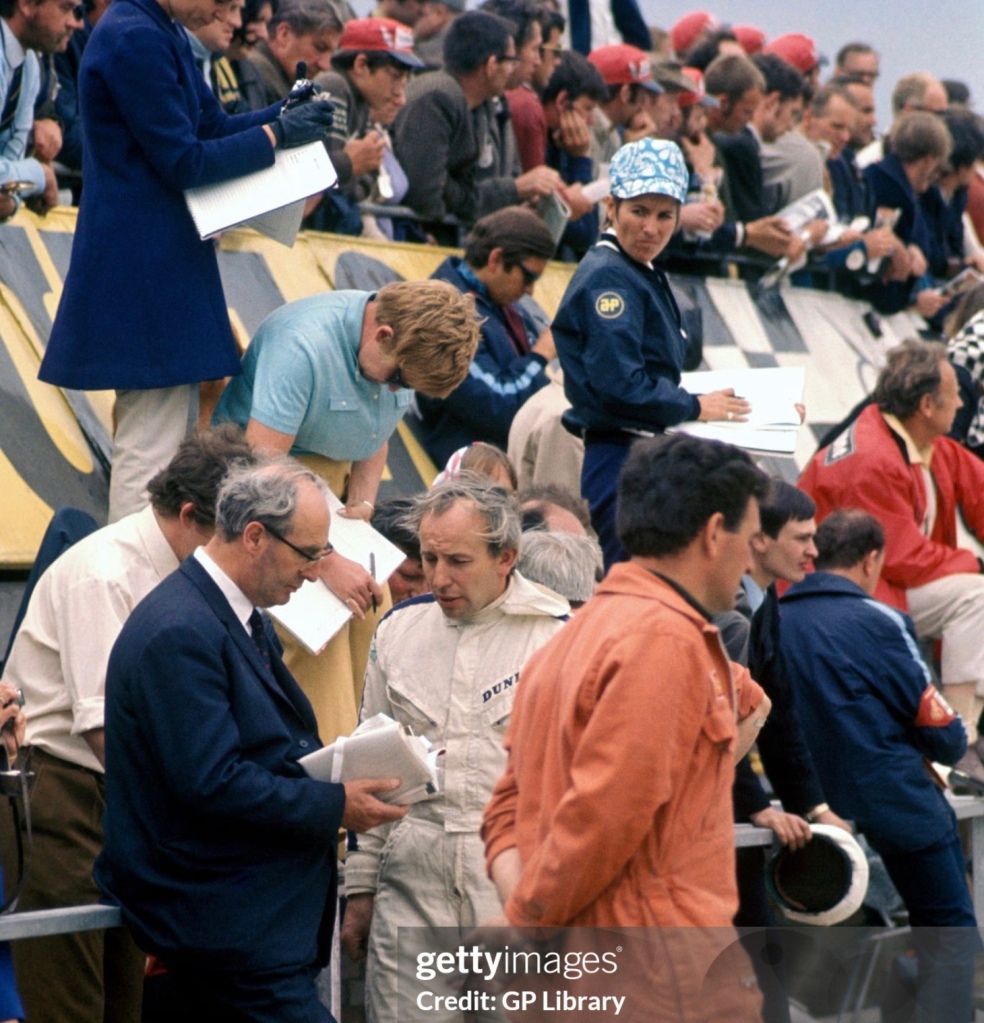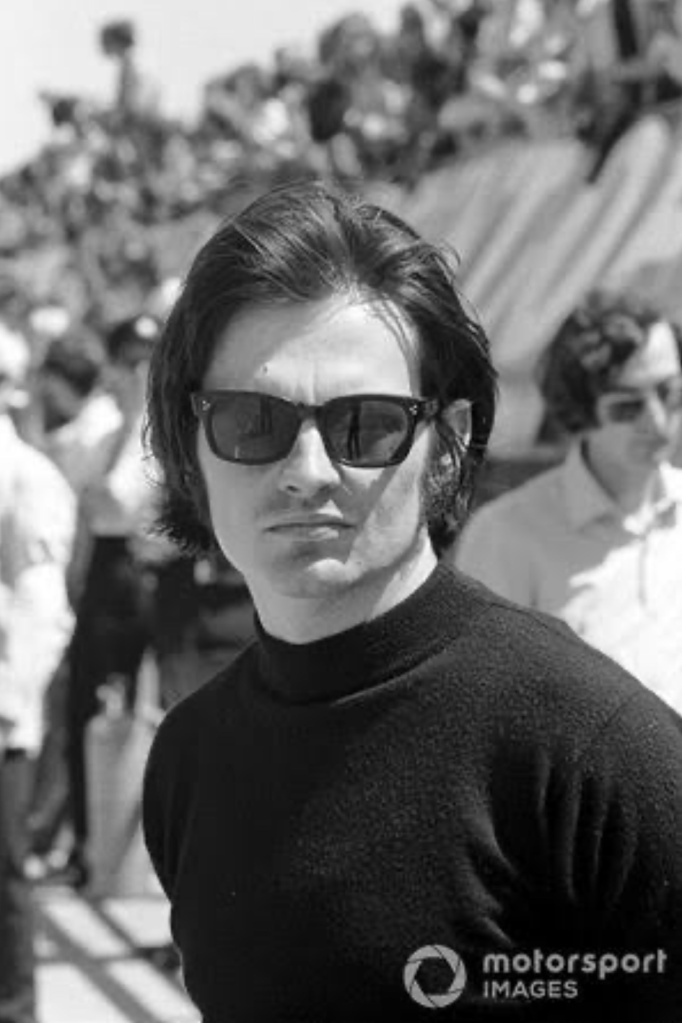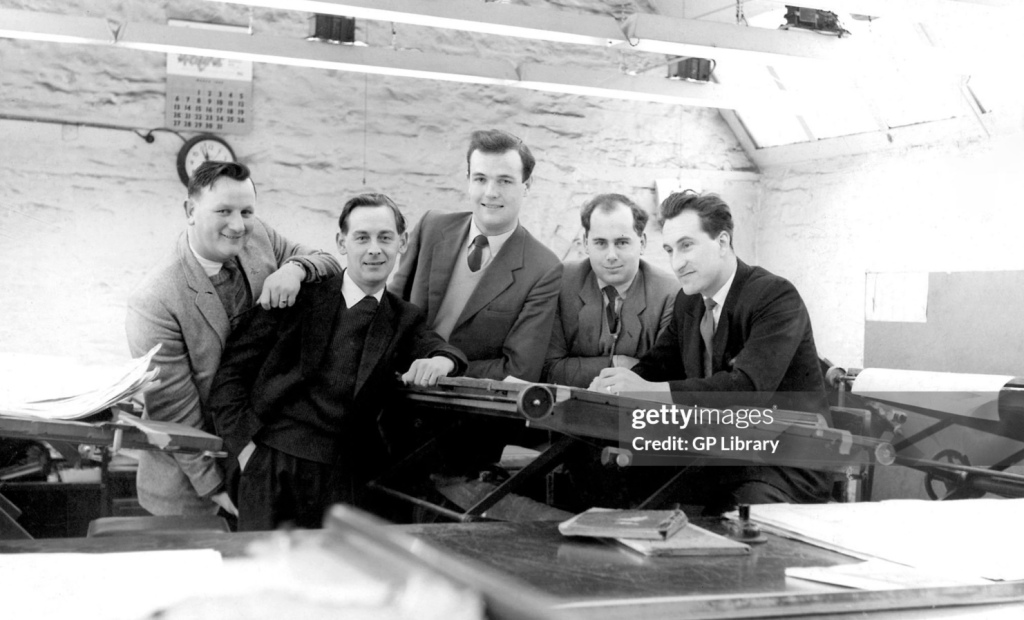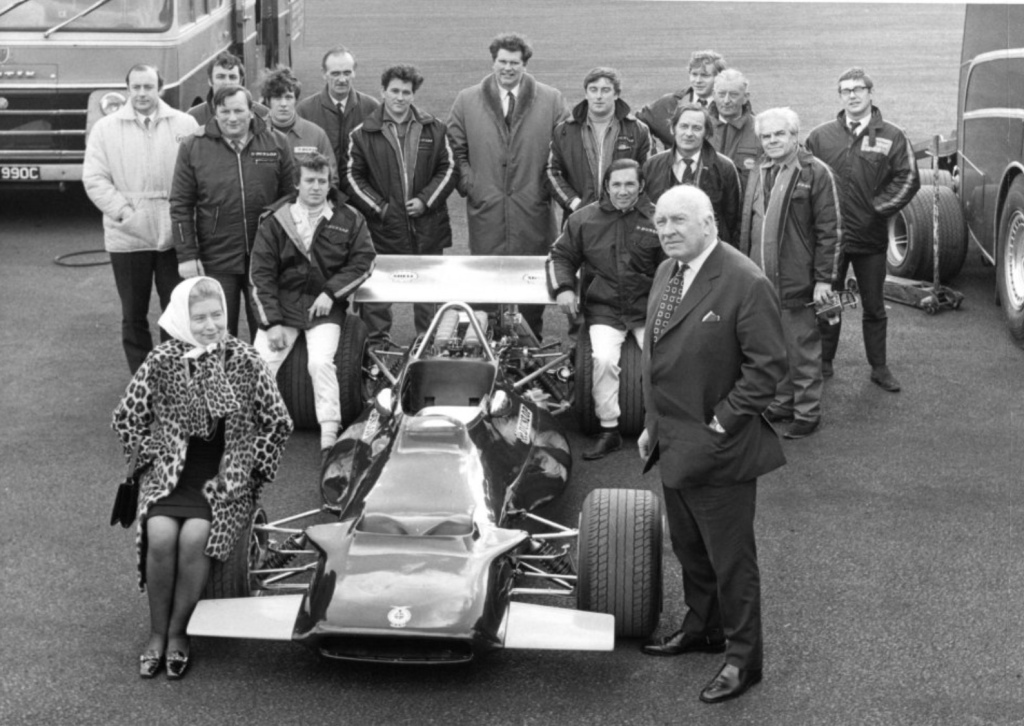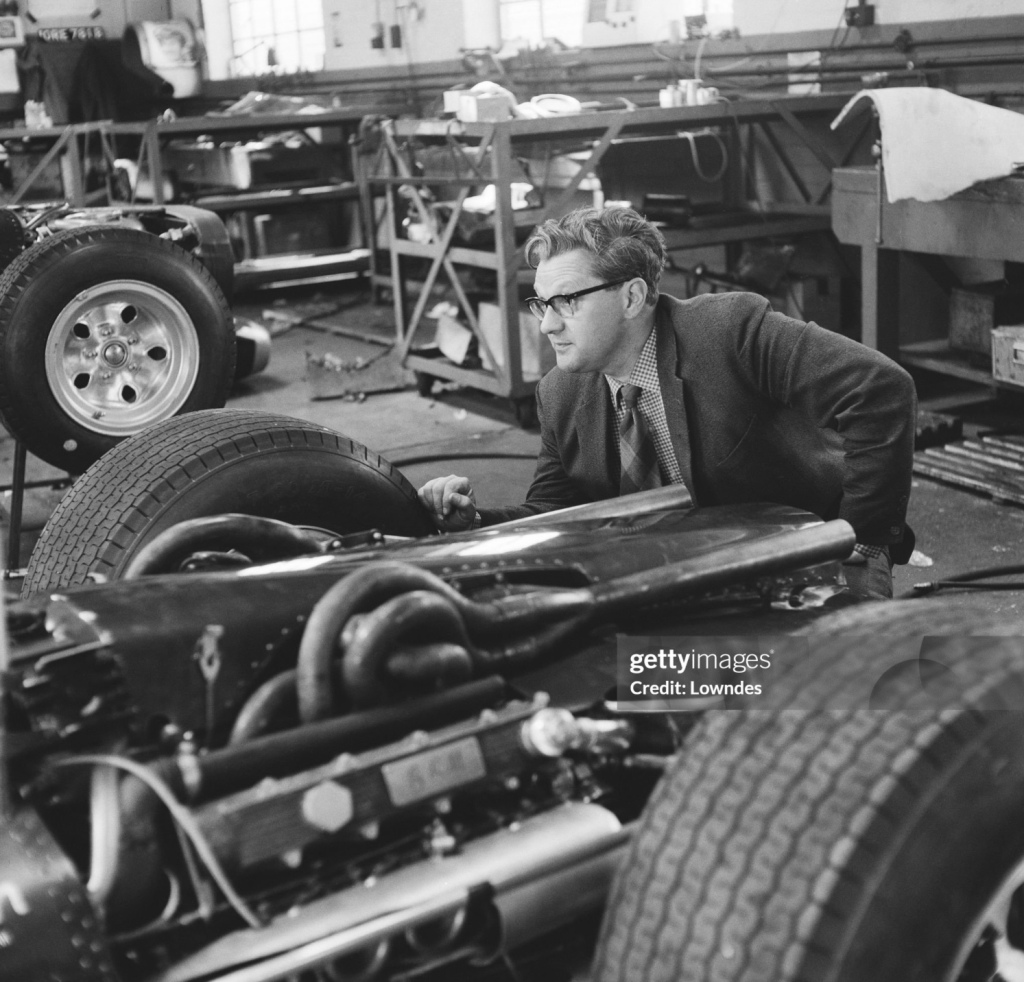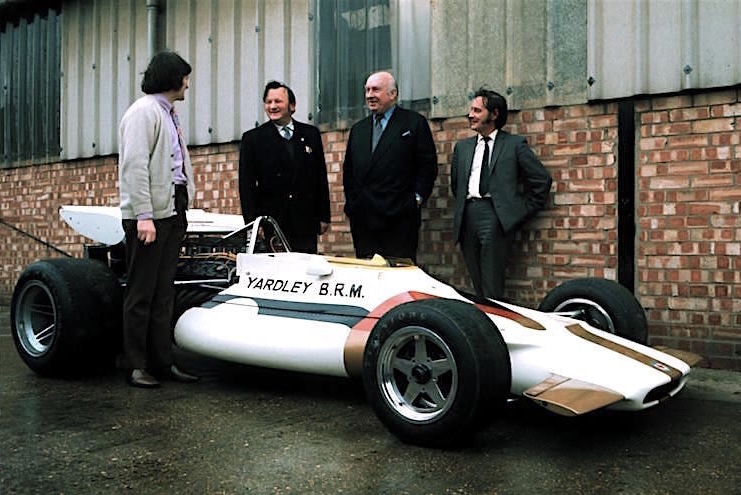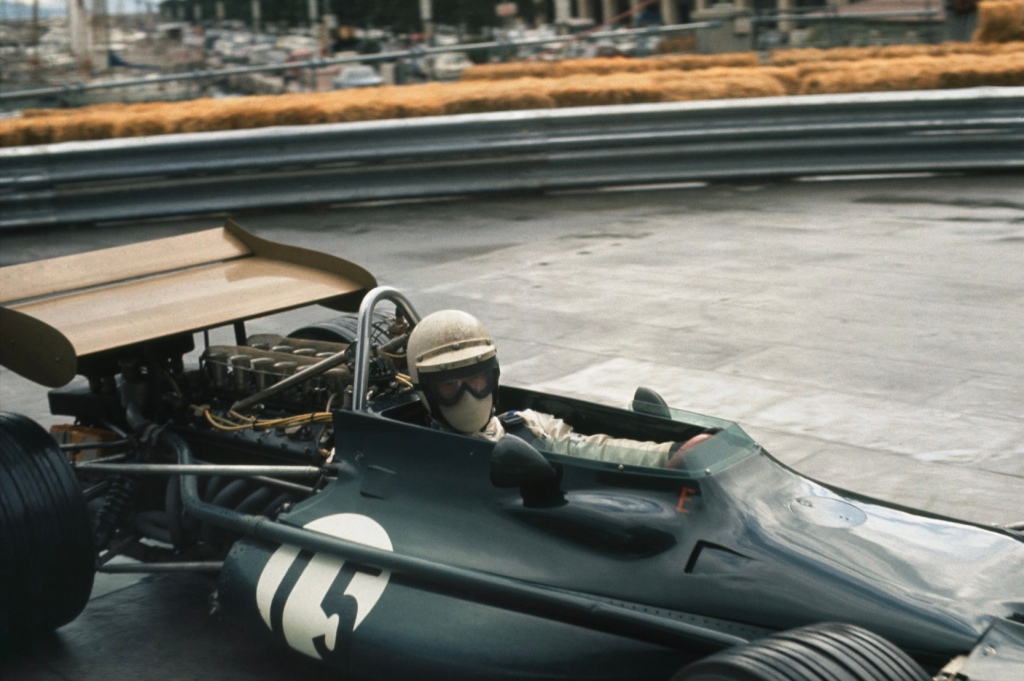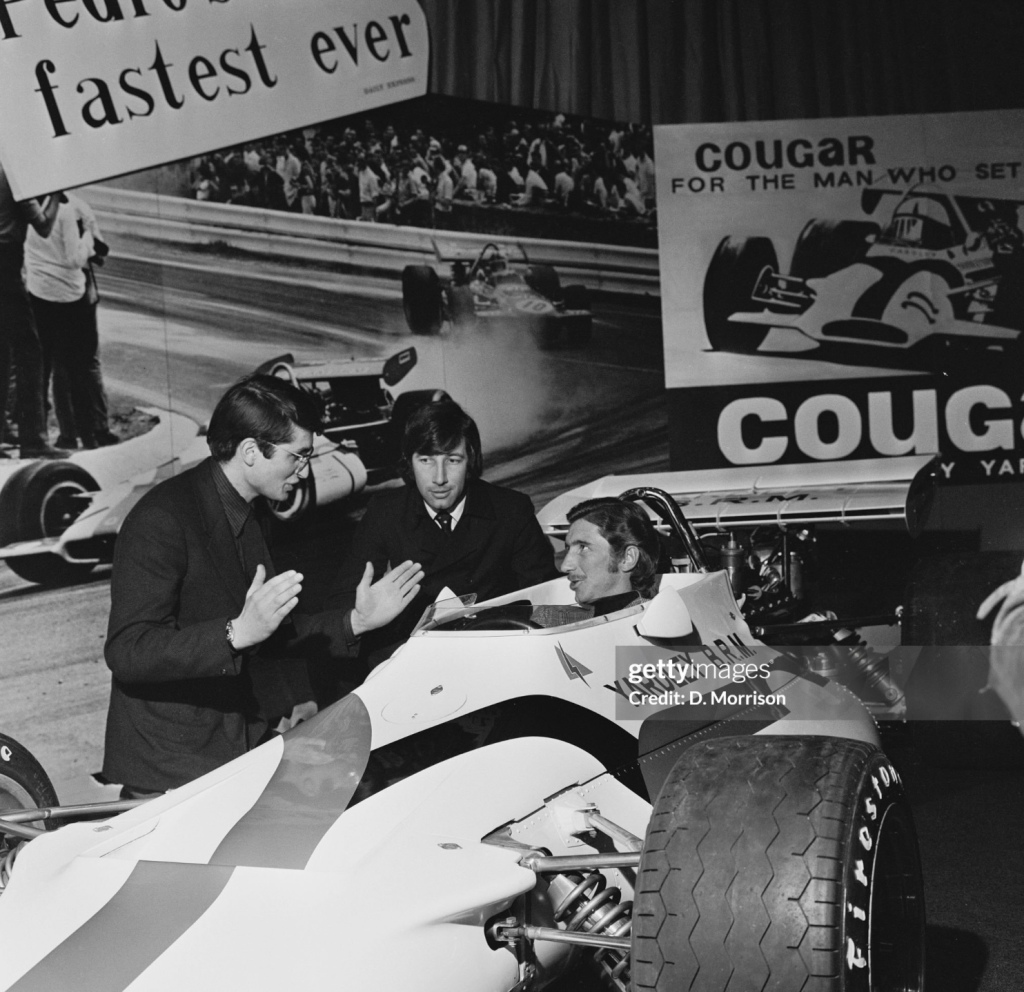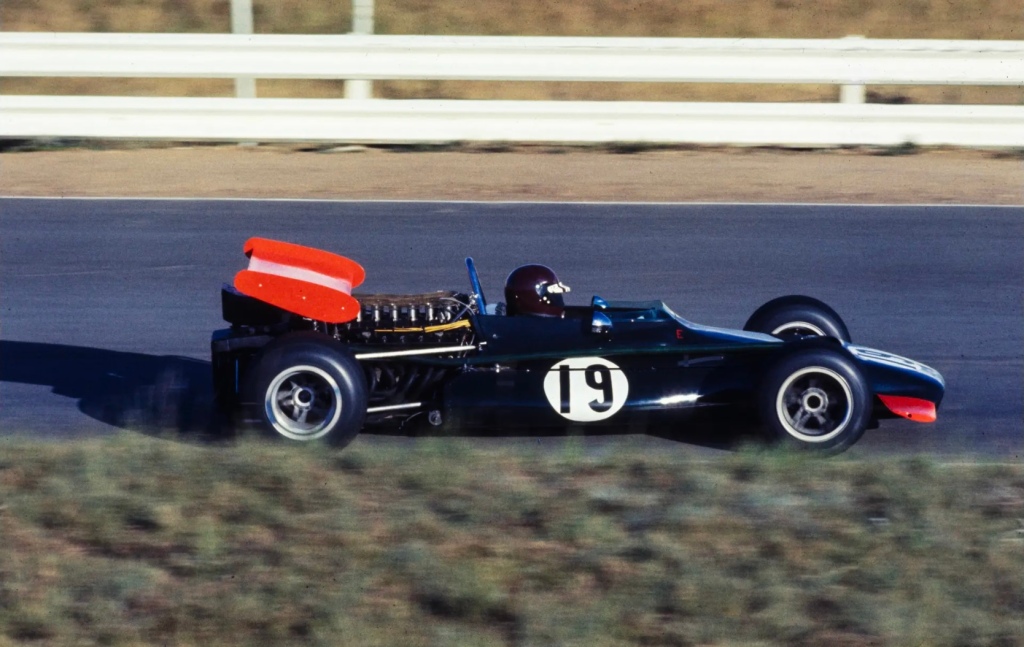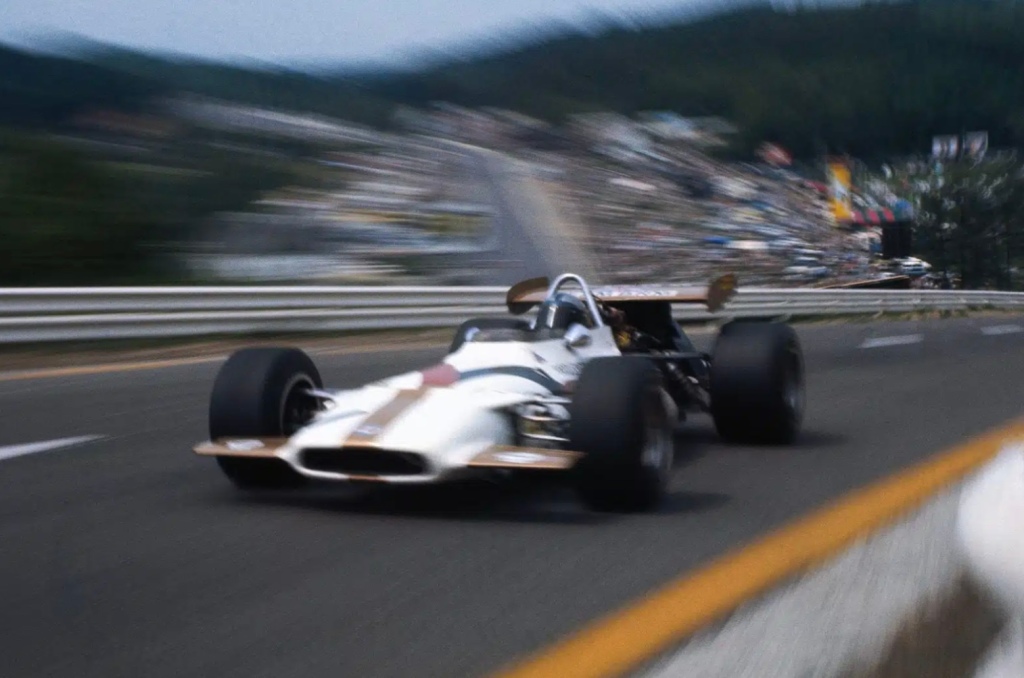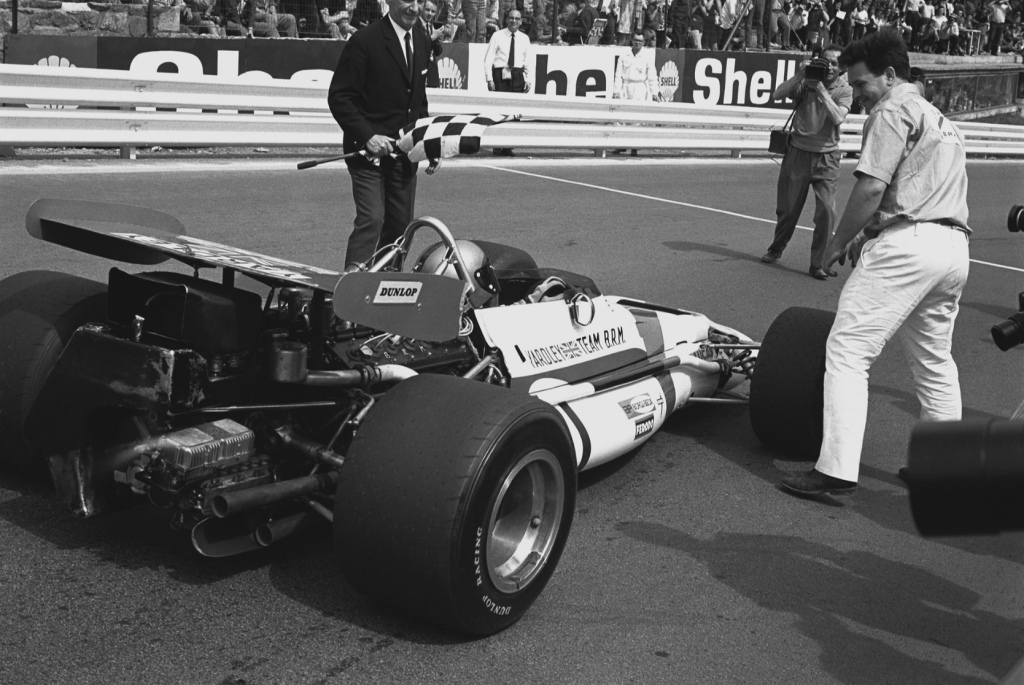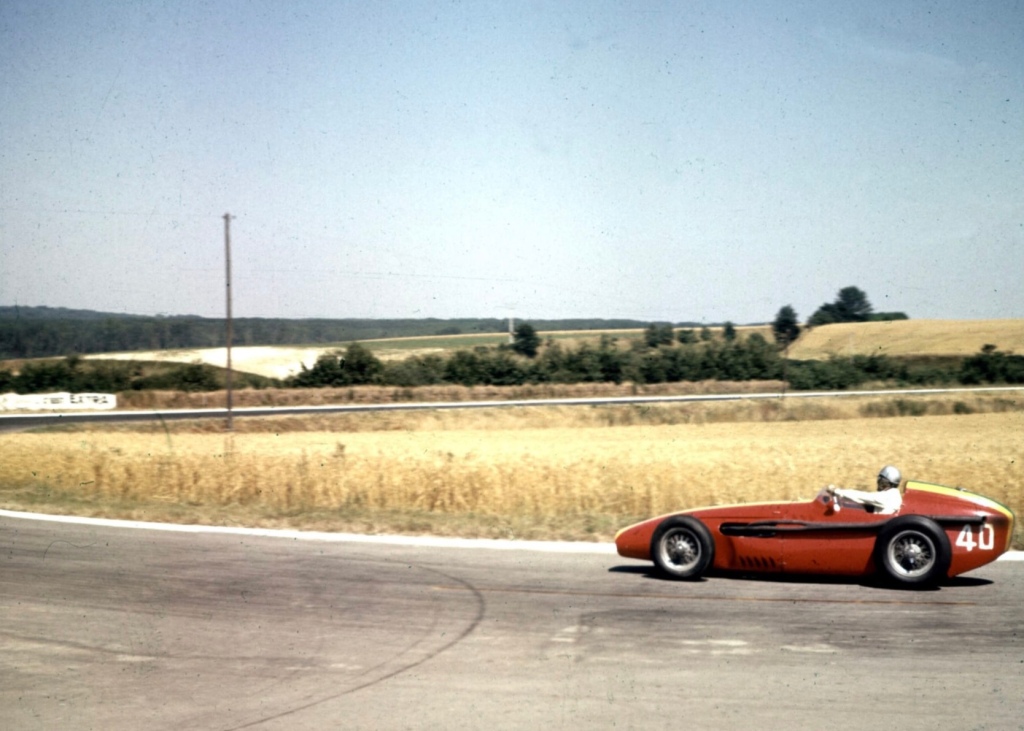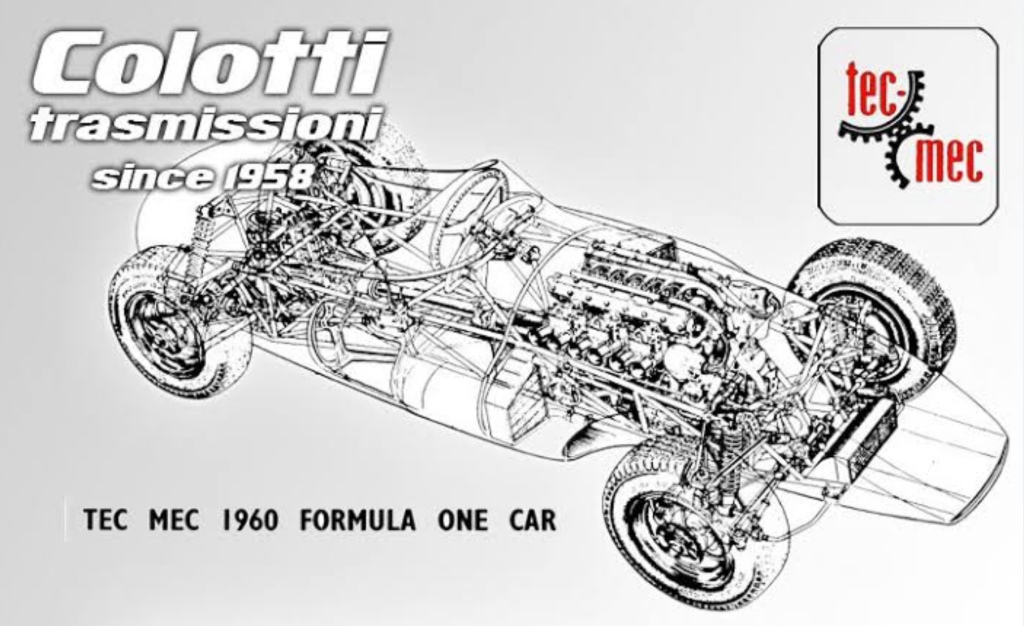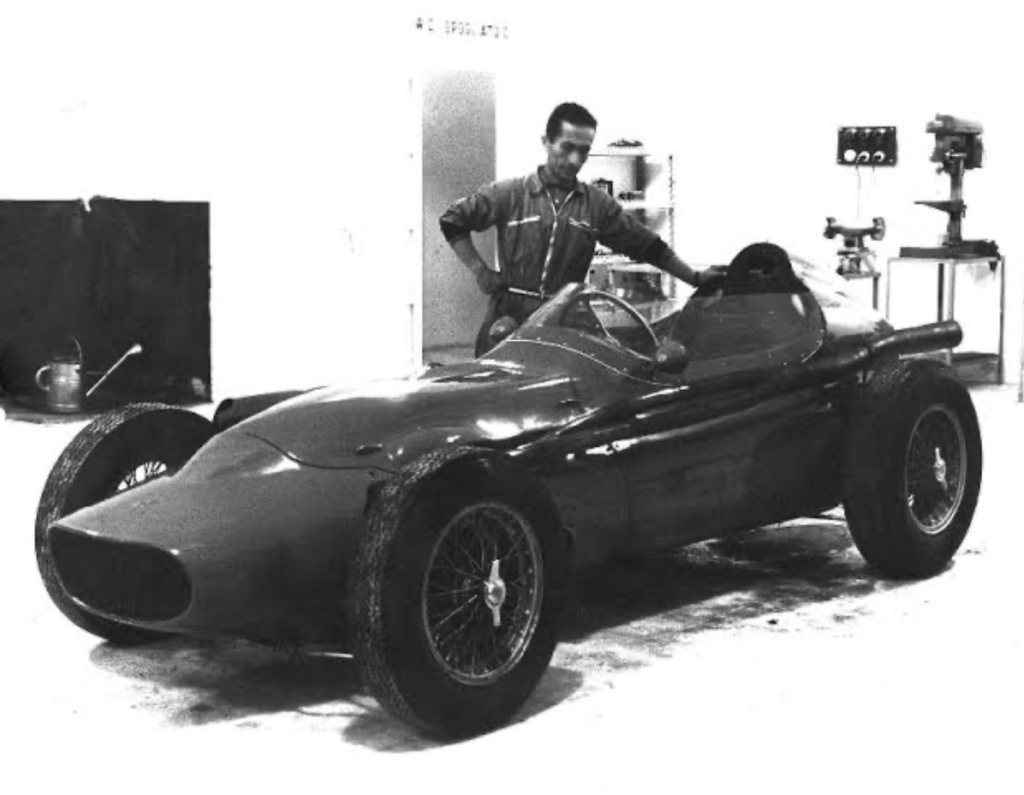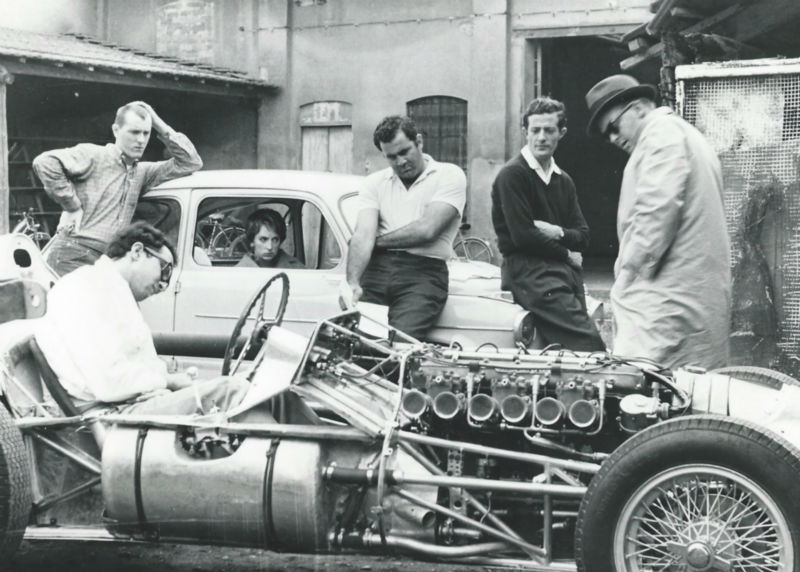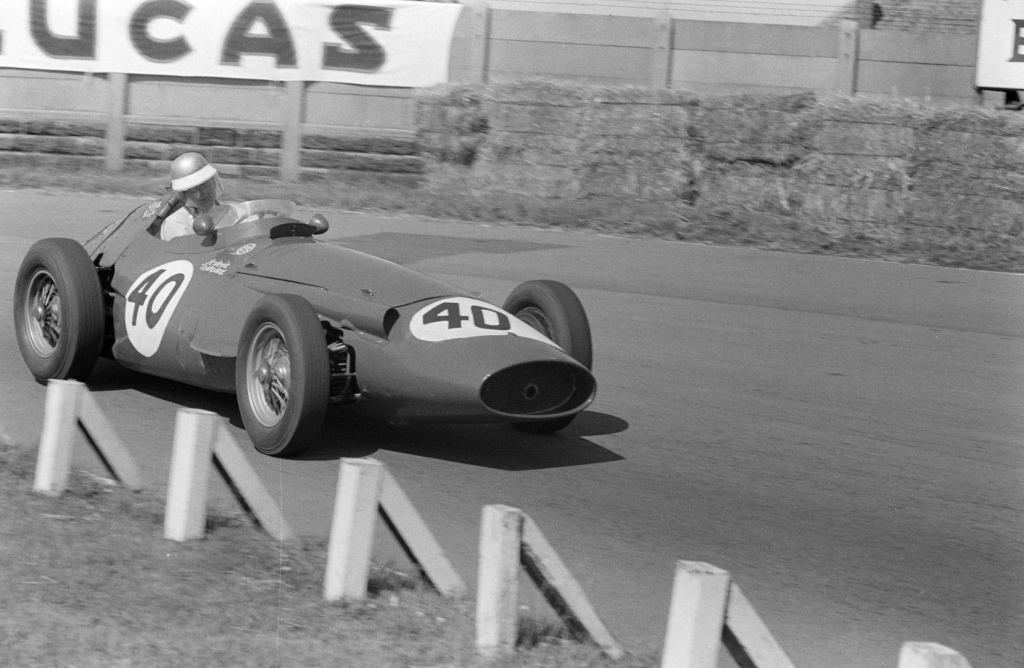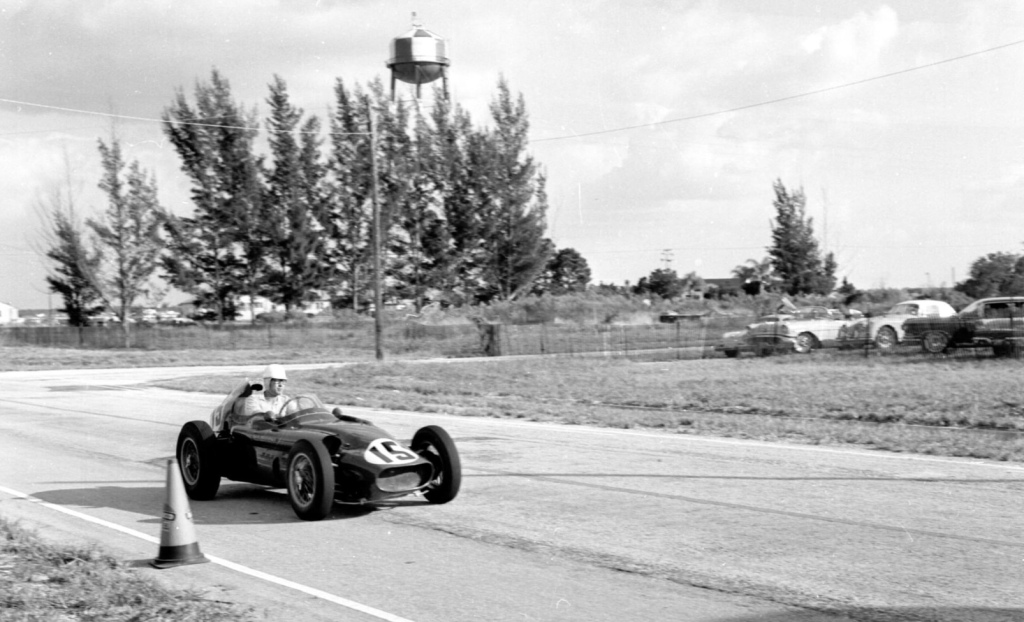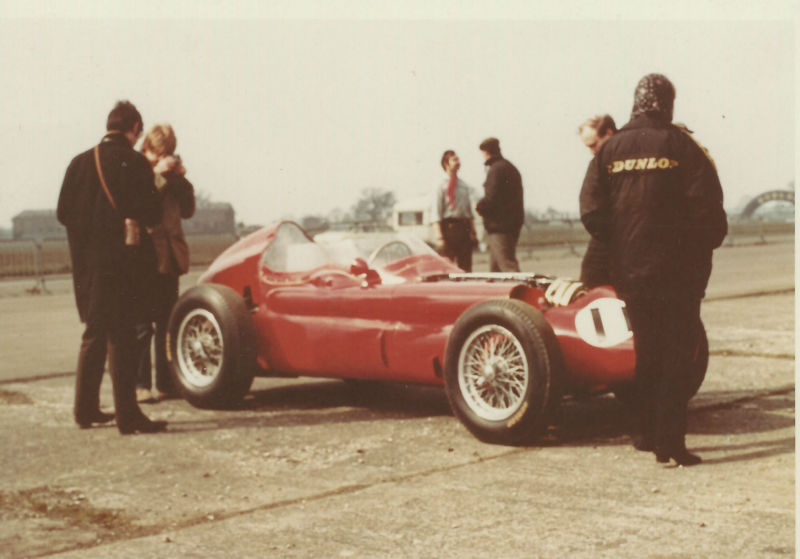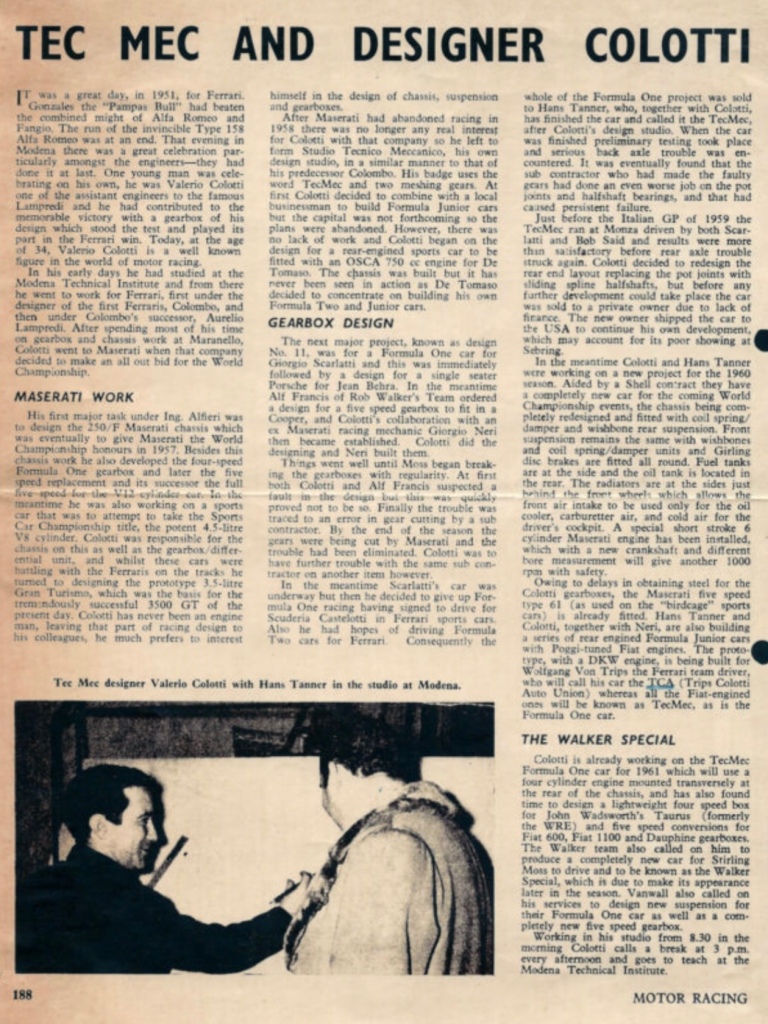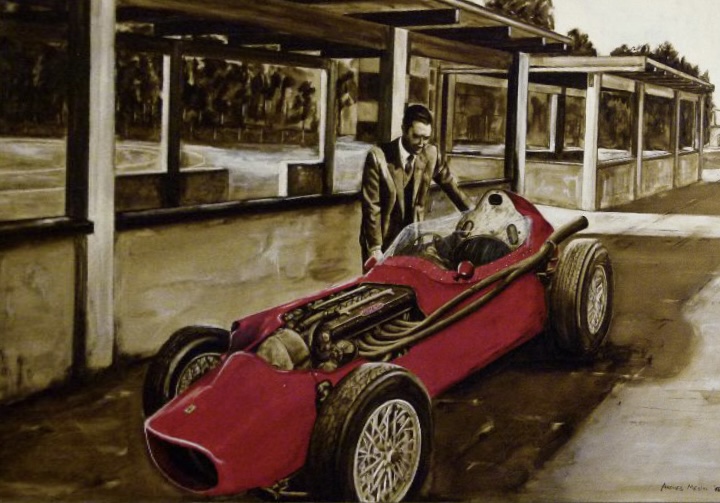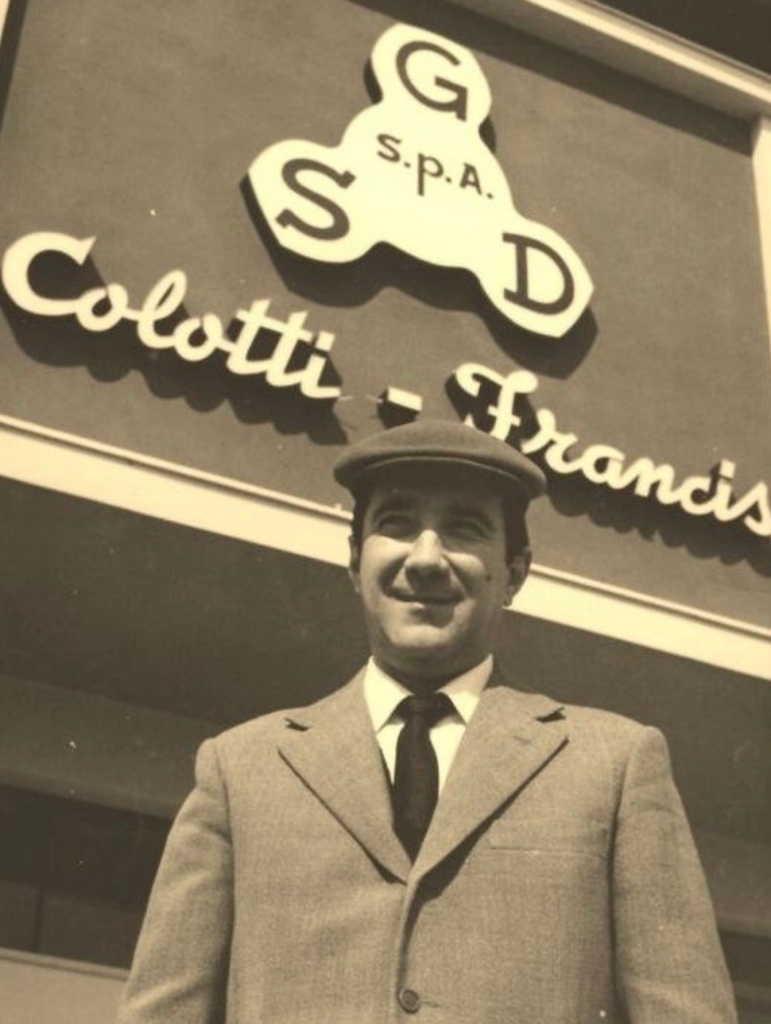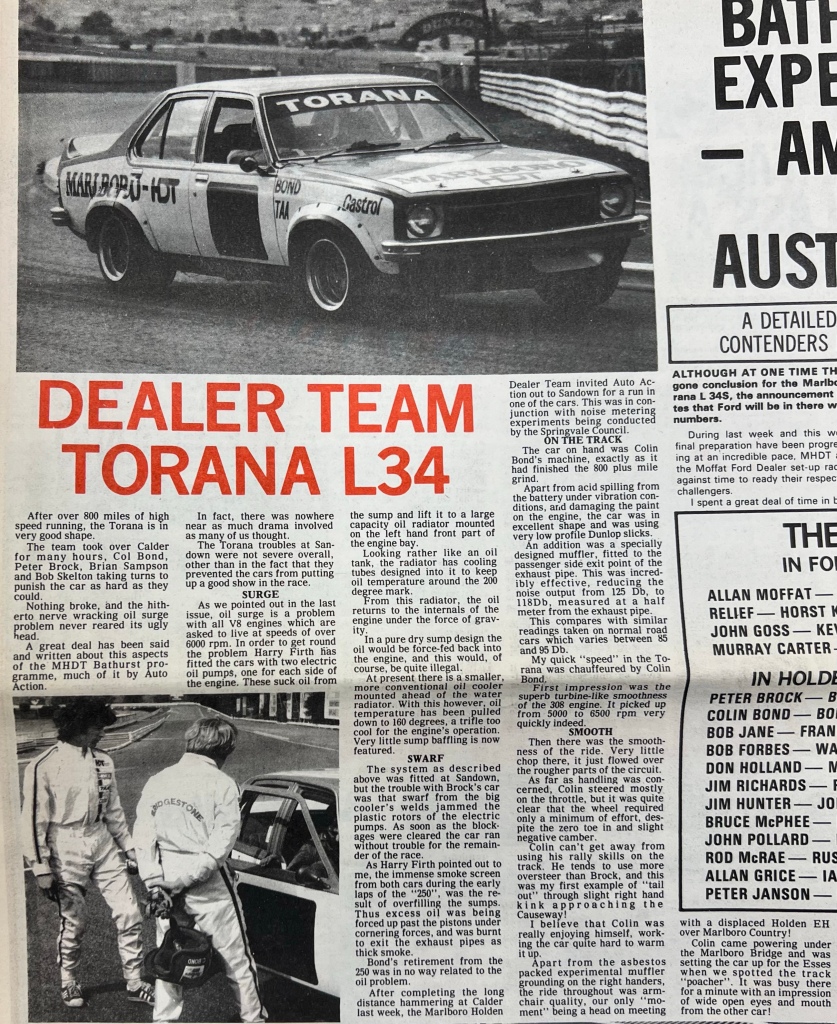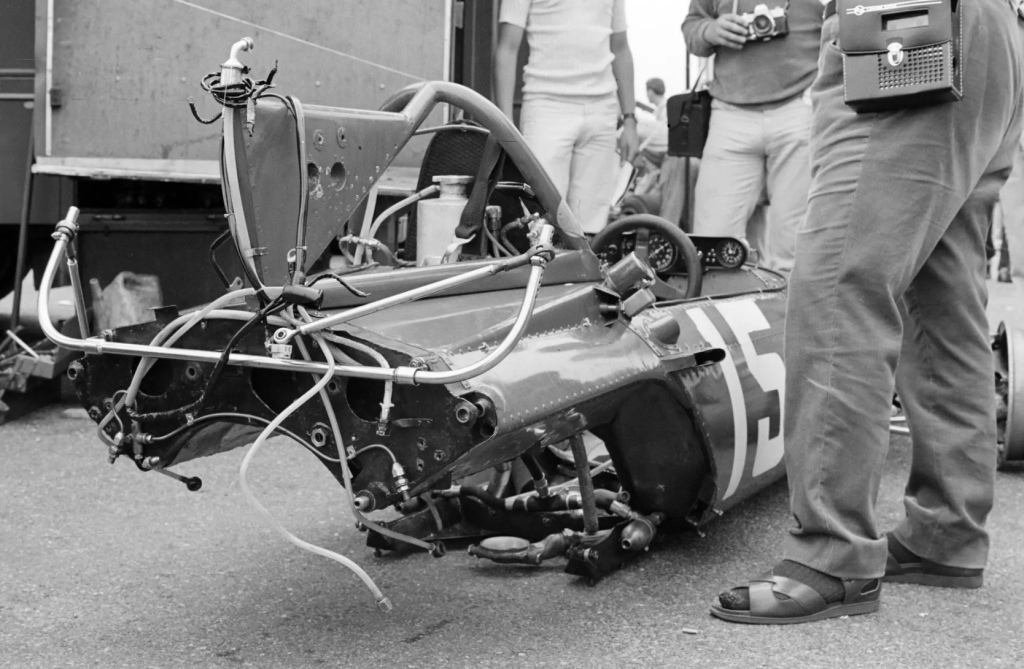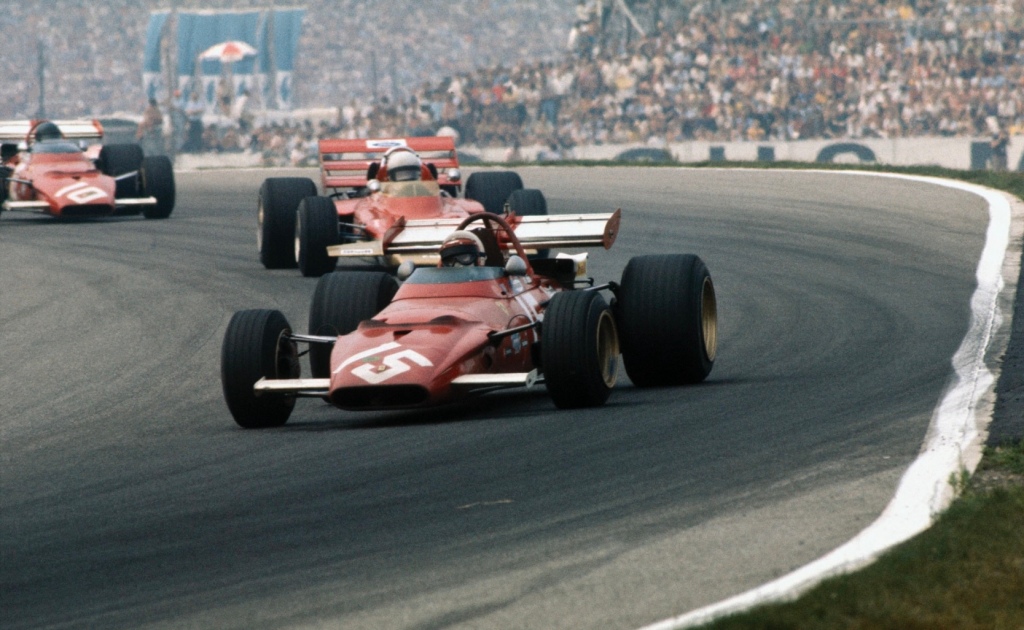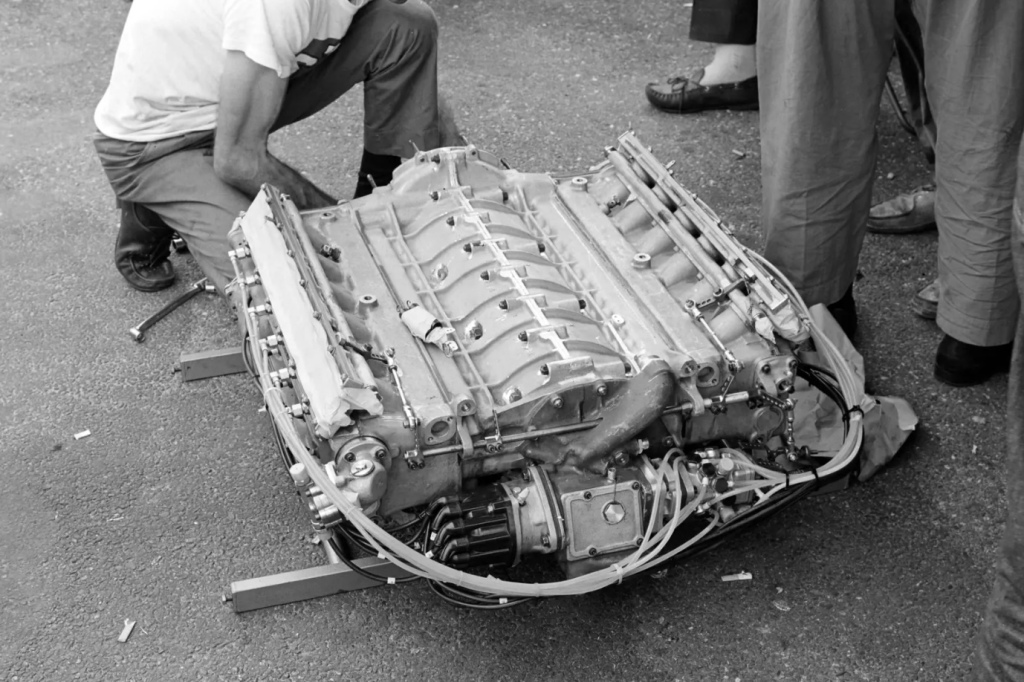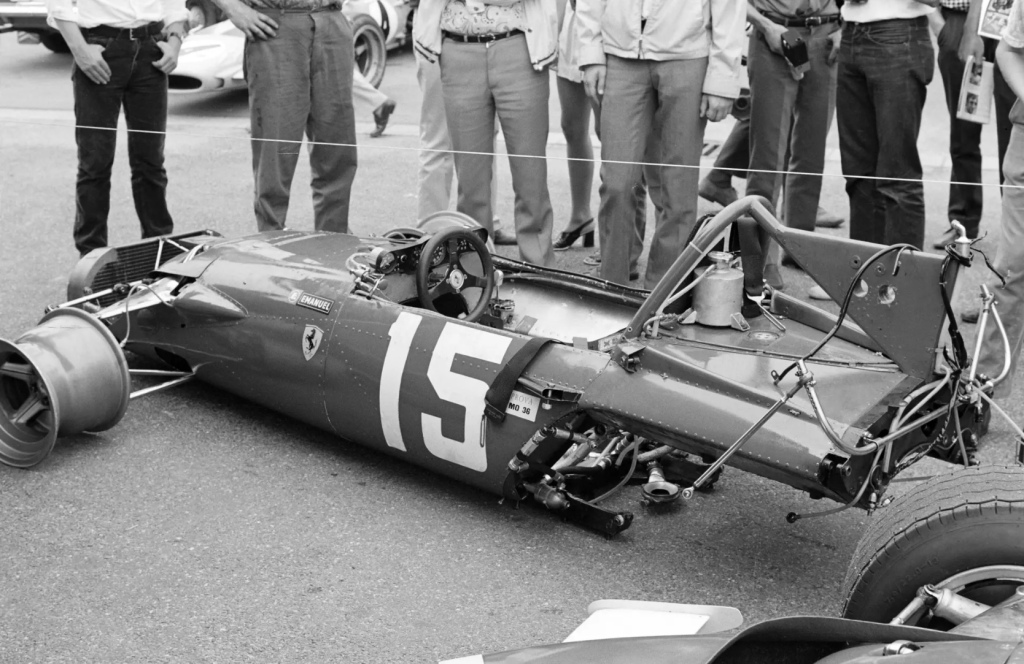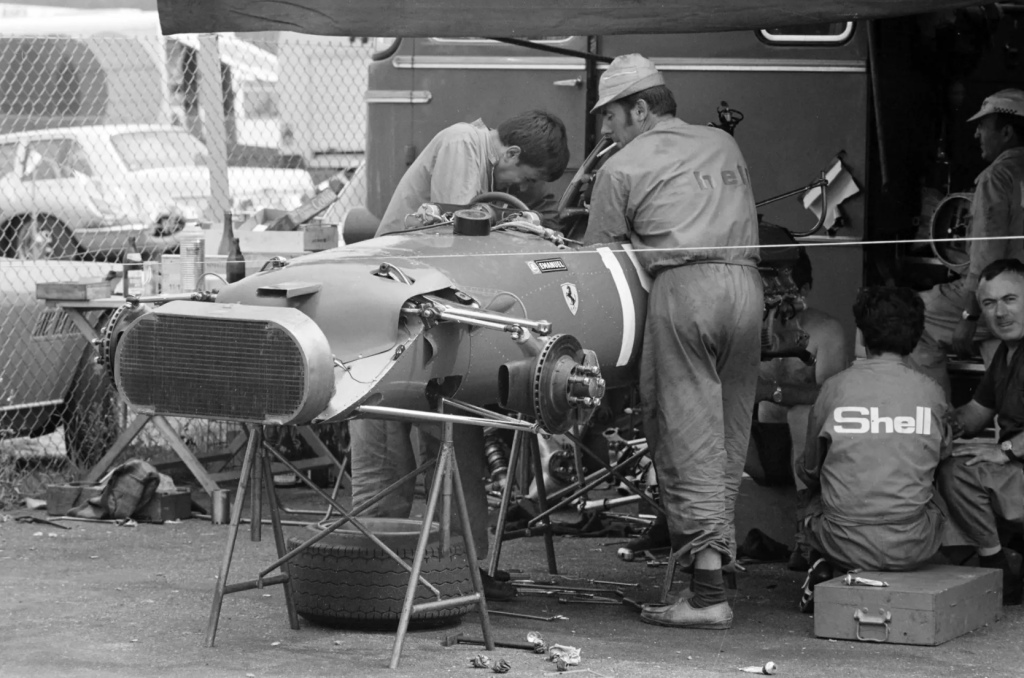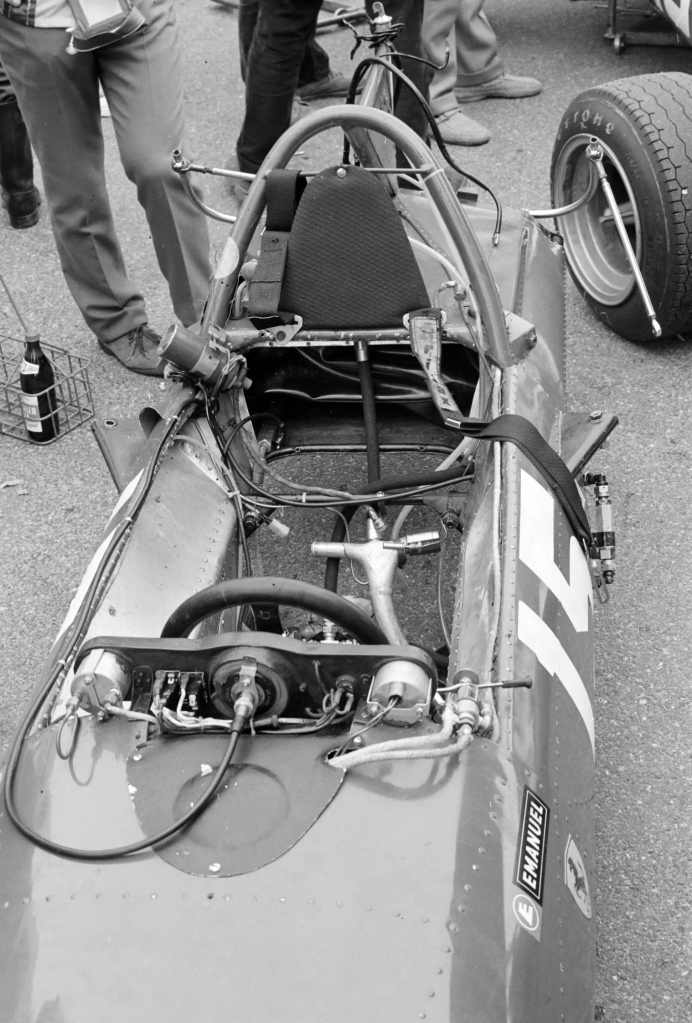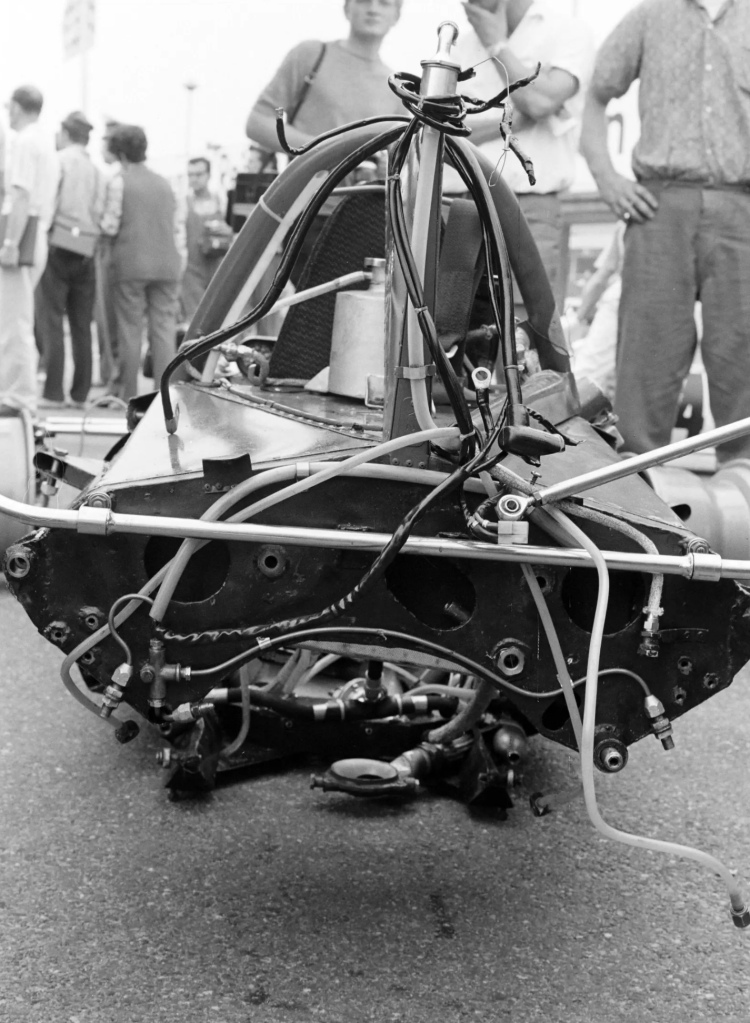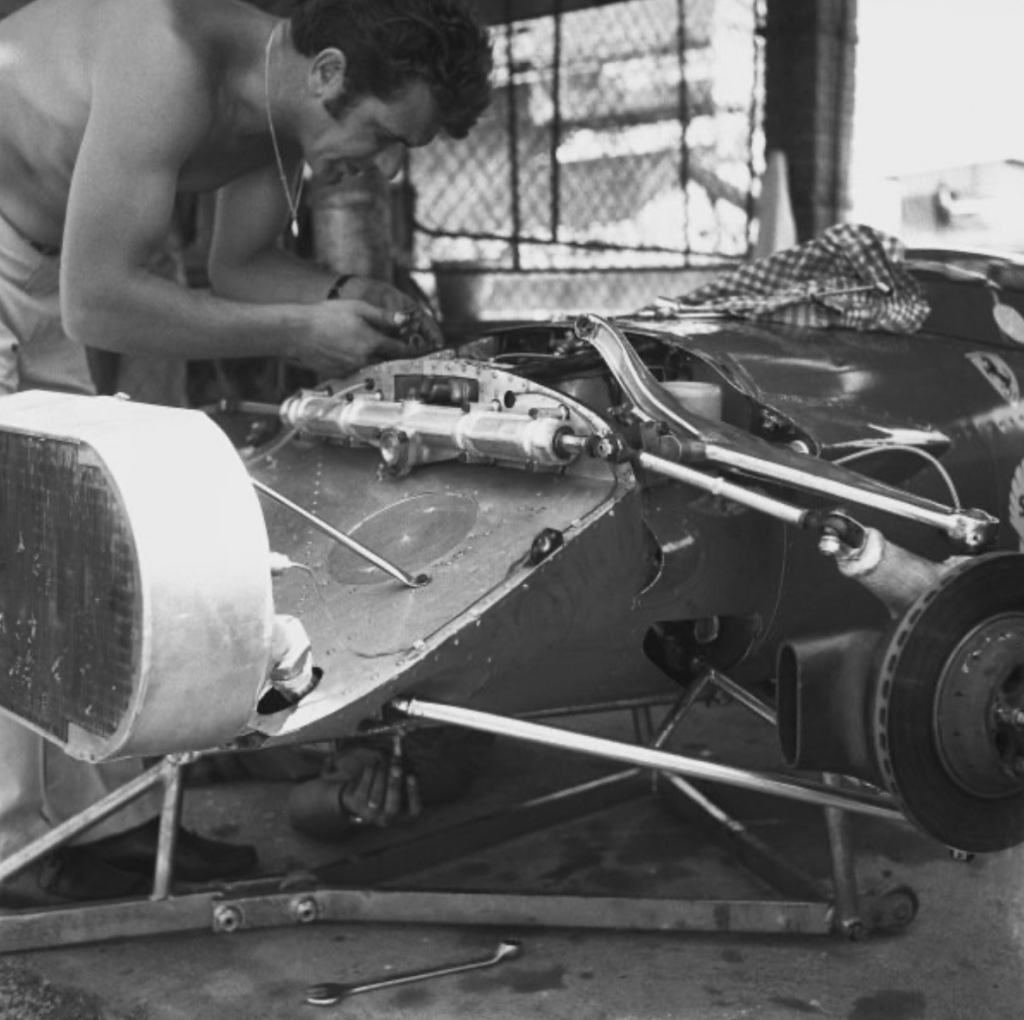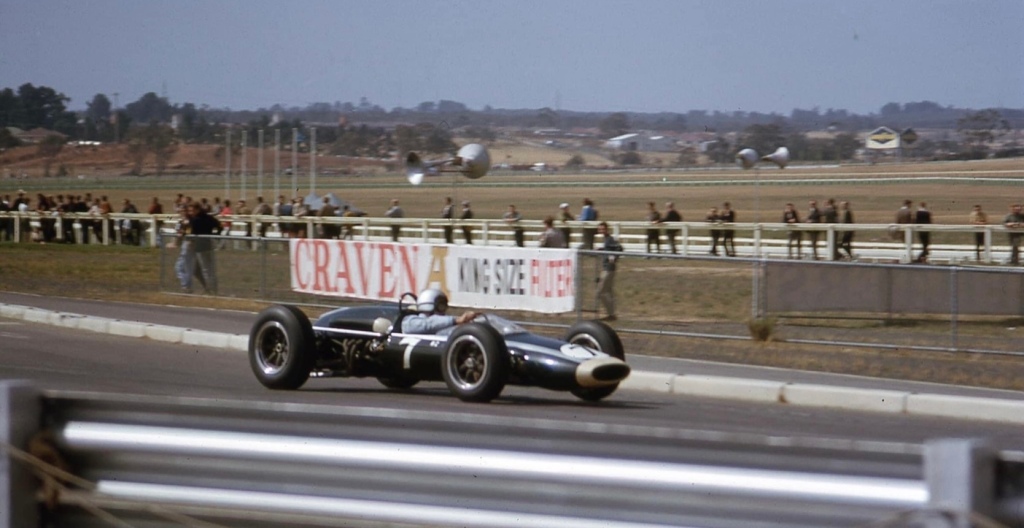
Bruce McLaren tips his Cooper T70 Climax into Shell corner at Sandown during the 1964 Tasman Cup round – the Australian Grand Prix – DNF engine in the race won by Jack Brabham. See here: https://primotipo.com/2020/04/20/mclaren-cooper-t70-sandown/
The ‘first McLarens’ – two Cooper T70s – built by Bruce McLaren and Wally Willmott at Coopers in late 1963 have been very much in the news, and star of the historic show at the 2024 Australian Grand Prix carnival given it’s 60 years since Bruce McLaren won the very first Tasman Cup driving the two T70s that summer. Bruce won three of the eight rounds – NZ GP at Pukekohe, Lady Wigram Trophy and Teretonga International – in this car #T70 FL-2-64, so too did Jack Brabham (Brabham BT7A Climax), but Bruce had the better haul of points.
Sadly, Tim Mayer crashed the car Bruce is driving above, to his death at Longford three weeks after Sandown. The surviving car (#FL-1-64) is owned by Adam Berryman, proudly showing off a car which has been in the family since 1974 at Government House, Melbourne on March 21. See here for more about the T70: https://primotipo.com/2016/11/18/tim-mayer-what-might-have-been/


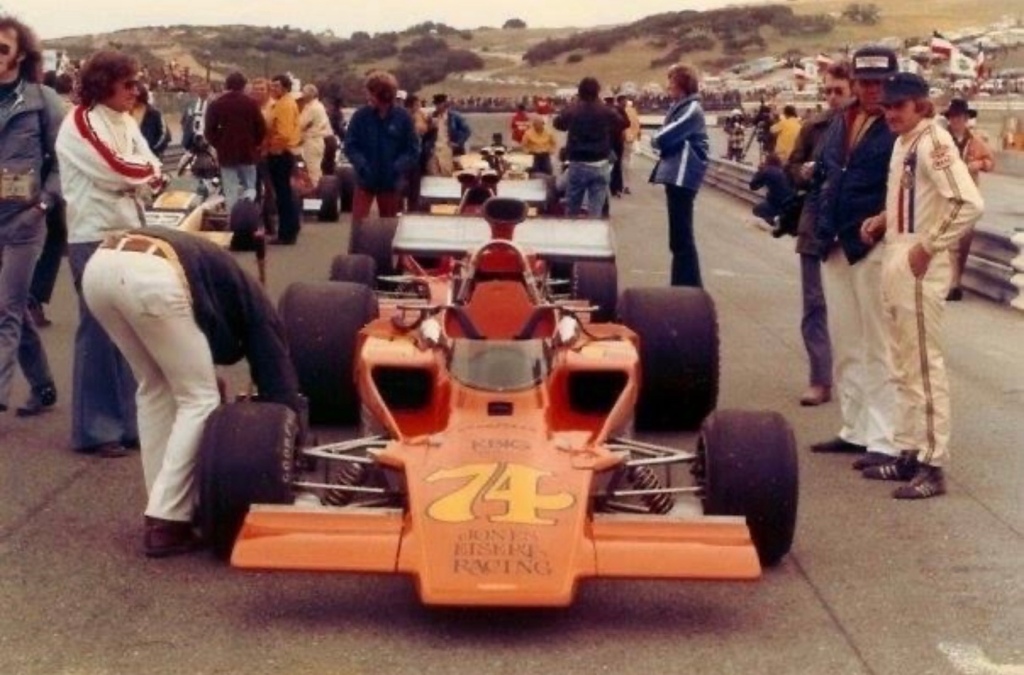
Aussie Ace, Bob Muir alongside the ex-Gary Campbell/Jones-Eisert Lola T330 Chev HU14 during the 1973 US L&M F5000 Championship round at Laguna Seca. Jerry Eisert is alongside Muir, John Wright is attending to the right-front, with Peter Molloy in the white top to the left.

Early days below in a Rennmax Mk1 Formula Vee at Warwick Farm in 1966, see more about Bob here: https://primotipo.com/2023/02/13/bob-muir-r-i-p/


Reg Hunt’s Maserati A6GCM/250 during the 1955 Moomba TT meeting held at Albert Park on March 26-27. I’m not so sure its the prosperous motor dealer owner at the wheel.
Hunt had a great weekend with his new car – a 2.5-litre Maserati 250F engined A6GCM – winning the Argus Cup 50-miler and one heat of the Argus Trophy 50-mile feature. He led the final until the red car’s crown wheel and pinion failed, giving Doug Whiteford’s well driven old Talbot-Lago T26C a lucky win.
Hunt turned the local scene on its head with this car, it was the most recent Grand Prix car imported to Australia for many a long year. All of his motor dealer rivals had to reach way-deep into their pockets to keep up with the Brighton Road dealer. See here for more on this car: https://primotipo.com/2017/12/12/hunts-gp-maser-a6gcm-2038/
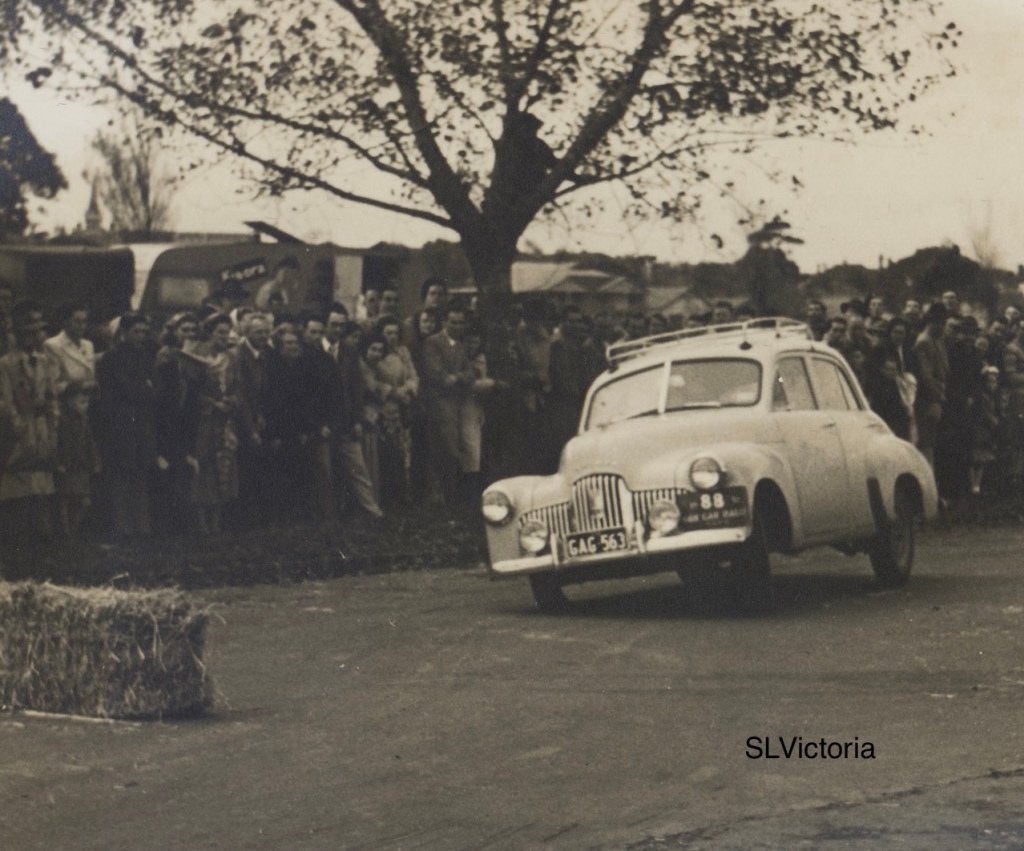
Holden 48-215 at Albert Park was about the extent of the State Library of Victoria caption, before 1970 Australian Rally Champion, Bob Watson came to the rescue.
“It’s a BP Rally of the 1950s, possibly Lex Davison driving. A sub-event in Albert Park at the end of the rally, later events finished at Chadstone Shopping Centre on Mother’s day in front of huge crowds.” See here: https://primotipo.com/2018/12/06/general-motors-holden-formative/

Ross Jensen on the way to victory of the 1959 Bathurst 100 held over the Easter long-weekend, Maserati 250F, #2509/2504. He is negotiating Hell Corner before heading up Mountain Straight.
It was a terrific win by the visiting Kiwi, all of our Top-Guns were there but Ross beat the lot: Stan Jones, Arnold Glass, Len Lukey, Alec Mildren, Doug Whiteford and others. He was as sharp-as-a-tack having raced for the works-Lister Jaguar team in Europe in 1958 upon the recommendation of Archie Scott Brown who had raced his works-lister in New Zealand in the Summer of ’58 and was impressed by what he saw.
That’s Len Lukey congratulating him below, #5 is Len’s Cooper T45 Climax 2-litre, the 250F on the far side is Glass’s. Love the proboscis…


Colin Bond, Holden LH Torana SL/R 5000 L34 during the 1975 Phillip Island 500k enduro, a round of the Australian Manufacturers Championship.
It’s hard to believe its nearly a half-century since this crowd pleasing 5-litre/308 V8 engined beastie wrought havoc in Australian Touring Car racing, see here: https://primotipo.com/2024/03/05/holden-torana-sl-r-5000-l34/

1948 Australian Grand Prix winner, Frank Pratt, and passenger Alick Smith at Phillip Island, date unknown. Pratt, a Geelong motor cycle dealer and racer, had famously barely done any car racing when he won that Point Cook, RAAF Airbase, AGP (photo below). See here: https://primotipo.com/2021/09/27/werrangourt-archive-10-george-martins-bmw-328/
Held in searing summer heat, his BMW 328 hung on while the more fancied runners, both drivers and cars, wilted in the heat, see here: https://primotipo.com/2016/09/18/who-what-where-and-when-3/

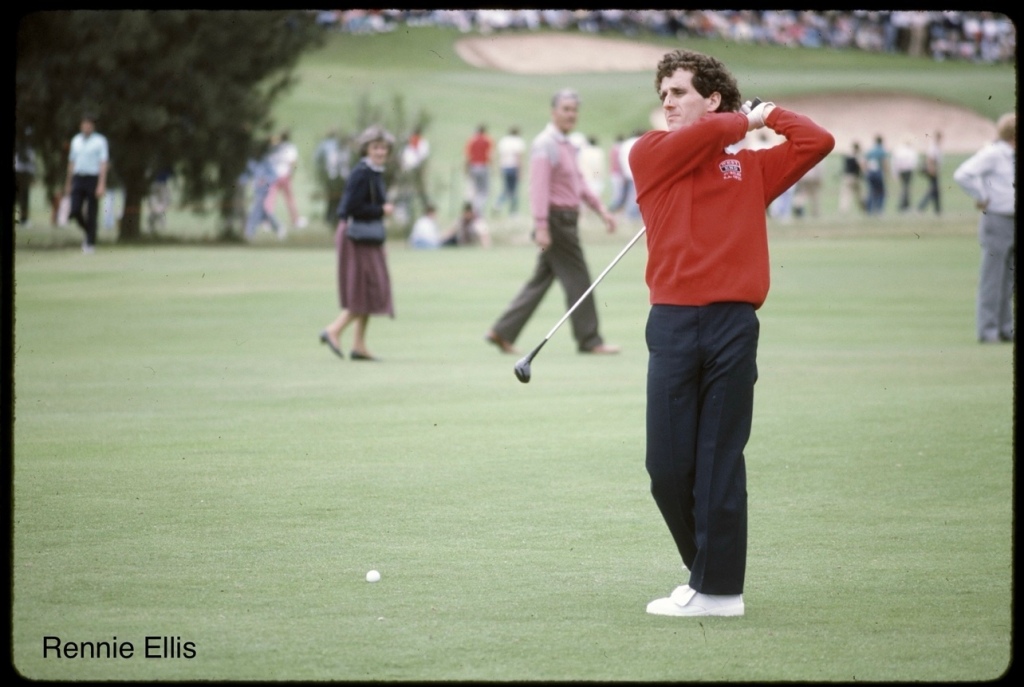
Missed by that much…
Alain Prost during the West End Jubilee South Australian Open Pro-am golf tournament held at Kooyonga during the 1986 Australian Grand Prix week in Adelaide.
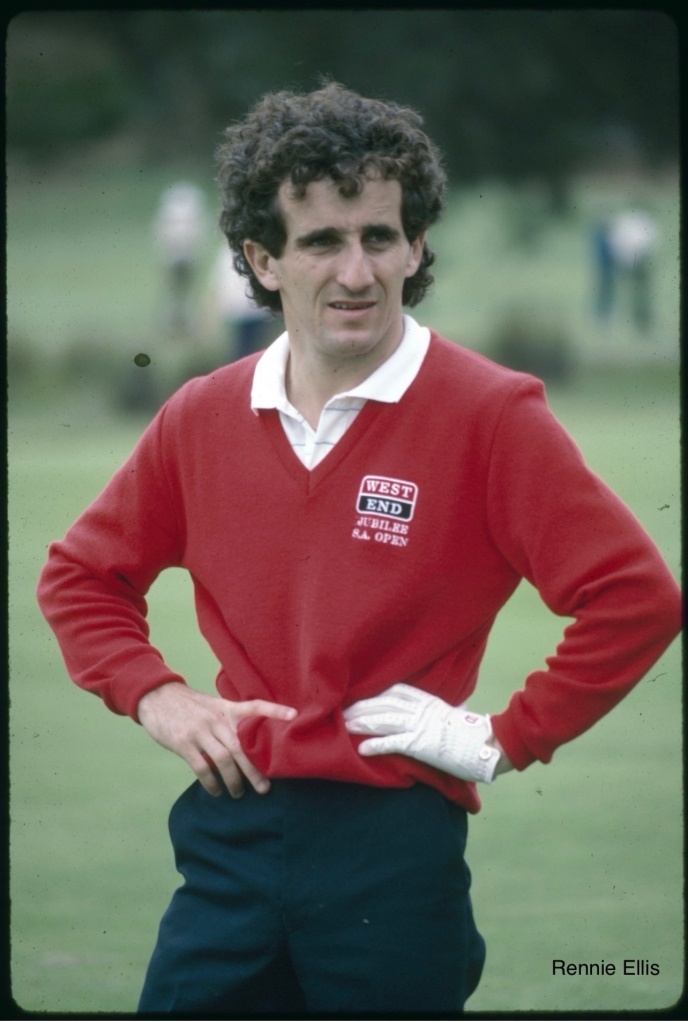
He looks pretty relaxed, and the weekend worked out mighty fine too.
Poor old Nigel had his 180mph Williams FW11 Honda 1.5 V6 tyre blowout, so his teammate Piquet was brought in for a precautionary tyre change and Alain’s McLaren MP4/2C TAG-Porsche 1.5 V6 won the race…and the title(s) in a thriller-diller of a race: Drivers and Constructors.


Jack Brabham contests a race at the short lived Altona circuit, to Melbourne’s west in March 1954, Cooper T23 Bristol. See here for details on the circuit and Jack’s visit there: https://primotipo.com/2016/06/24/jacks-altona-grand-prix-and-cooper-t23-bristol/

Sportscar grid at Warwick Farm circa 1967. Frank Matich, Matich SR3 Oldsmobile, Bob Jane, Elfin 400 Repco, Glyn Scott’s Lotus 23B Ford and Bill Brown – perhaps – in the Scuderia Veloce Ferrari 250LM. More on Matich’s Ferrari muncher here: https://primotipo.com/2023/04/02/matich-sr3/

Nigel Mansell blasts away from a pitstop on the Surfers Paradise road circuit during the March 21, 1993 Australian Indycar Grand Prix, Lola T93/00 Ford Cosworth XB V8.
In a portent of things to come that year, series debutant Mansell won the opening round of the ’93 CART Championship. He won five of the 16 rounds, and the championship with 191 points, fellow ex-F1 World Champ, Emerson Fittipaldi was second on 183, Penske PC22 Chev.
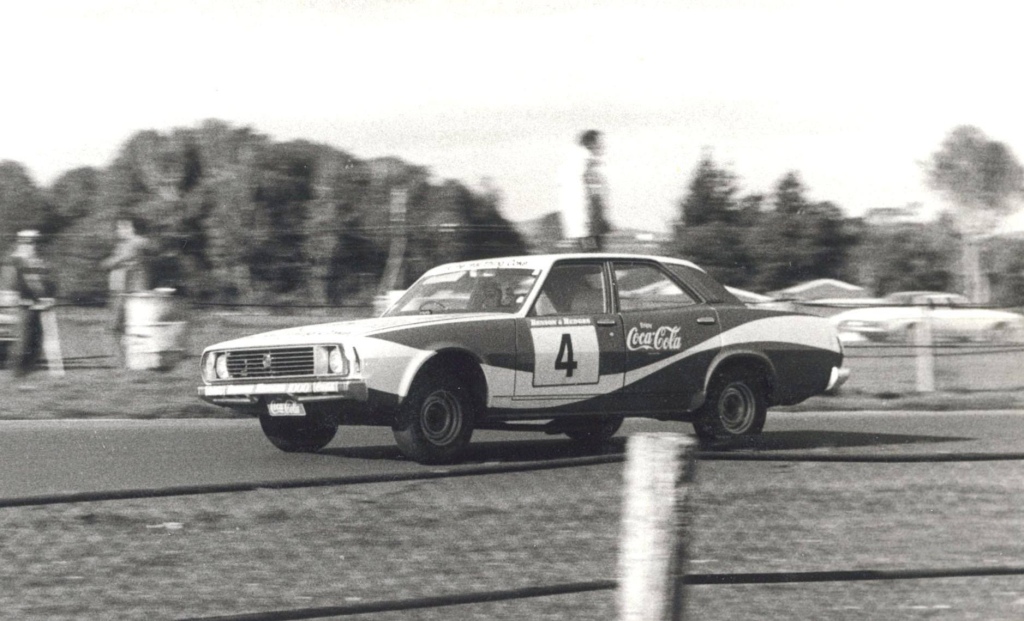
Not so much thought of as a racing car in Australia, Leyland’s P76 4.4-litre V8 got a run in New Zealand’s annual B &H 1000 enduro, in this case the 1975 event at Pukekohe.
This one was raced by the very experienced and successful David Oxton and Garry Pederson who finished fourth, the winning car was another Australian car, a Valiant Charger – usually dominant in this race – driven by Wayne Wilkinson and Bryan Innes.
Chris Denby, in an amusing Facebook post relates the story of the exhaust problem which befell the similar car raced by Dauntsey Teagle and Jim Murdoch. “Over a few laps its impressive engine became ‘uncorked’, which injected some great V8 sound into its otherwise fairly subdued race noise.”
“Suddenly it sounded more lie a stock-car than a production saloon – very impressive in the stand. The stewards were quick to act, within minutes a message came over the Tannoy asking if any spectator had a P76 V8 in the carpark would he allow his car to be relieved of its exhaust system to help a race team on the track (they faced exclusion otherwise).”
“That approach didn’t work. A later Tannoy message said, ‘If a spectator with a Leyland P76 notices a much louder than normal exhaust note upon leaving the track, don’t worry, the race mechanics will fix it before you depart…”


Vern Schuppan contesting the Race of Champions at Brands Hatch in March 1973, BRM P160D.
The Victorian Governor’s Australian GP party is a wonderful event on the Thursday before the race, here is Jenny and Vern Schuppan on March 21, 2024.
Vern has just turned 81 and is a sharp as a tack. The couple live in a penthouse apartment in the Adelaide Markets – on the AGP course – and split their time between there, visiting their son and family in Melbourne, their daughter in Cambridge, and another home in Portugal.
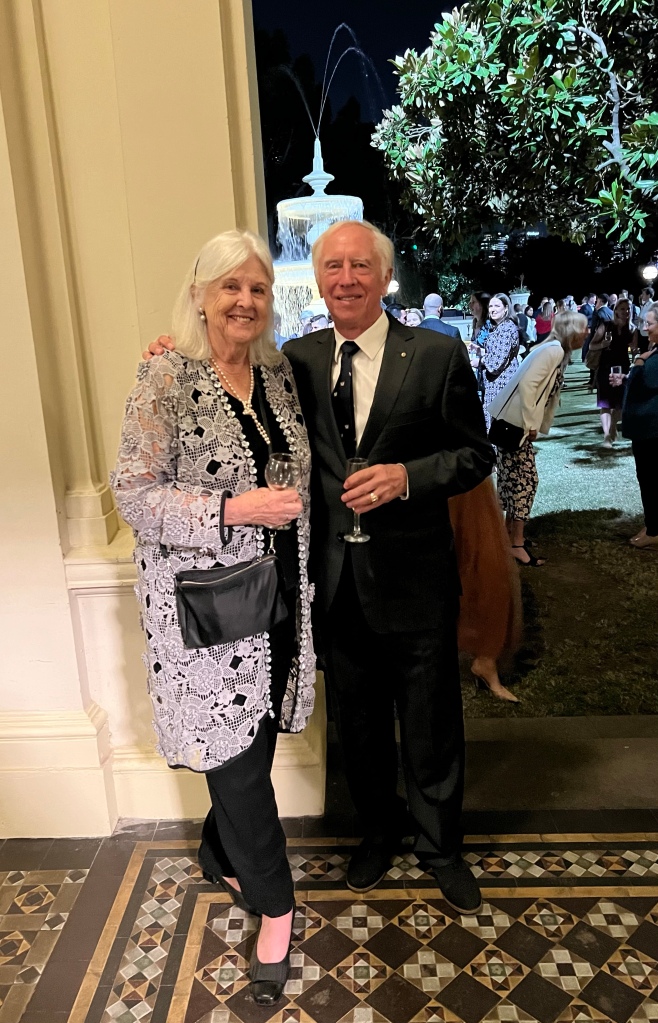

Fred Withers at Penrith aboard the Marcus Clark & Company owned Cleveland Six racer, circa 1925.
It’s hard to believe that department stores once sold cars, but there-ya-go! This company was founded by Marcus Clark in Newtown, Sydney in 1883 and by the early 1900s was a colossus operating from buildings like this on the corner of Pitt and George Streets, Railway Square, Sydney.
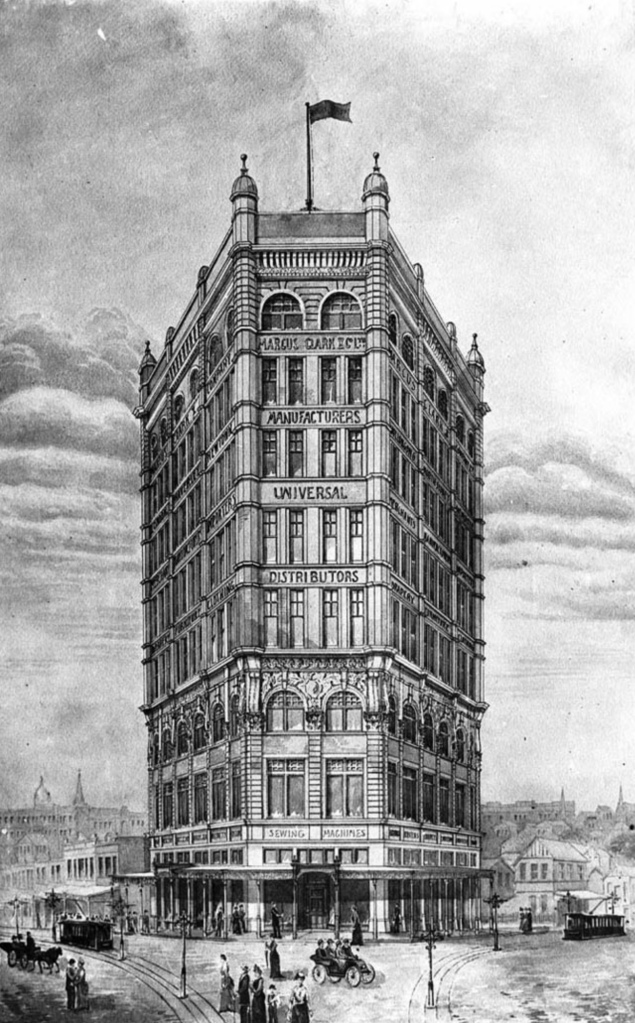
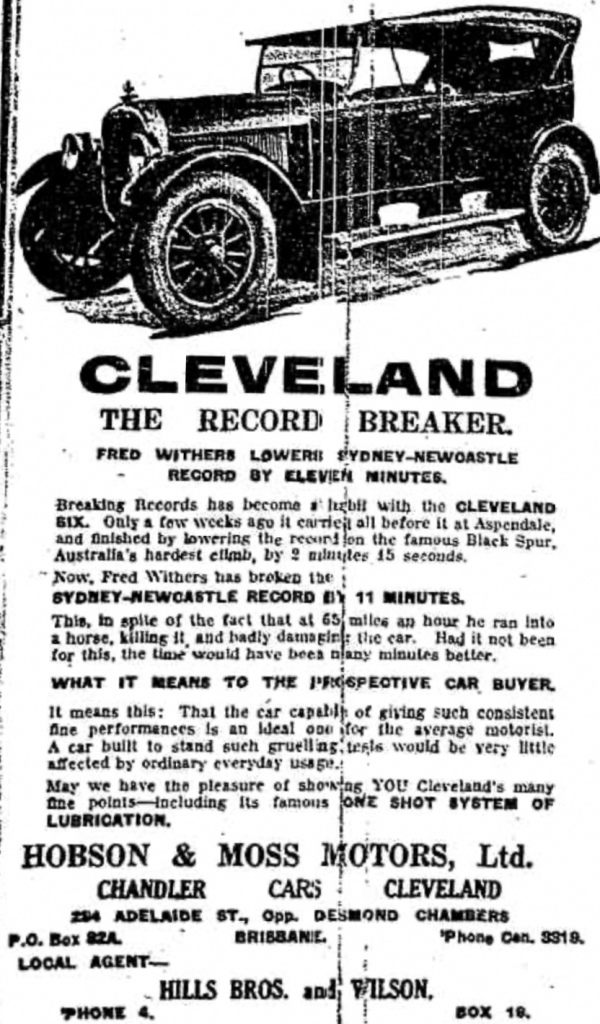
Withers raced the Cleveland Six at Penrith and Maroubra Speedways in New South Wales/Sydney and at Aspendale, outside Melbourne in the 1920s. He was also a record-breaker of some repute using Cleveland and Essex products.
He was famous at the time for some crazy jumps performed with his Essex to gain column-inches in the dailies, this shot was taken in 1927.
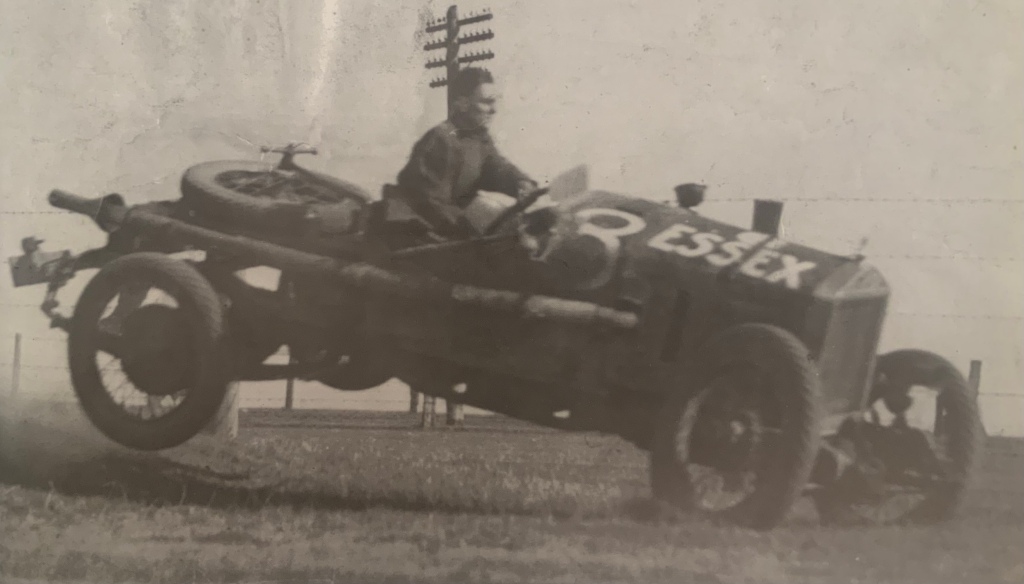

Frank Matich contesting the 1970 New Zealand Grand Prix in his much-modified McLaren M10A Chev at Pukekohe. FM had a pretty good Tasman Series, winning here at Pukekohe and at Wigram a week later. While he had the pace, he didn’t have Graeme Lawrence’s Ferrari Dino 246T reliability. Graeme prevailed by five points, 30 to 25.
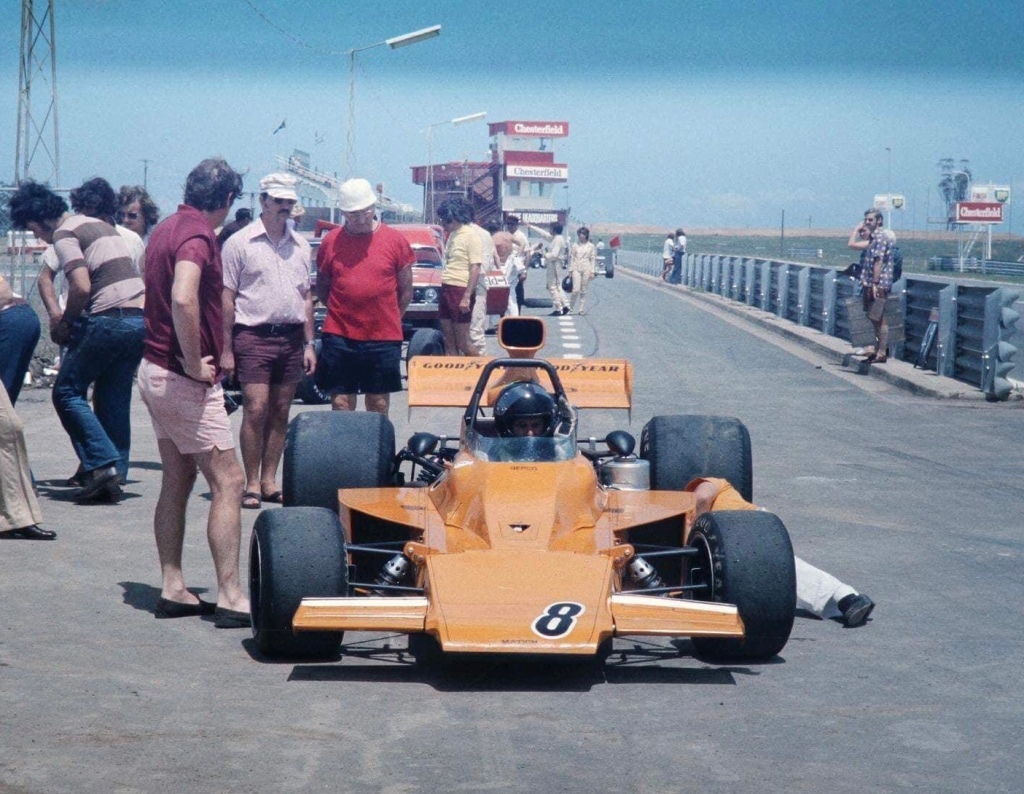
A little later, from 1971-74, Frank Matich and his small team designed and built six F5000 cars: three A50s, two A51s – one A51 evolved into the short-lived A52 – and this A53, the very last of the breed.
It was a tool intended to take on the best of the F5000 world, the US L&M Championship in 1974. That plan all turned to custard when Frank was injured in a boating accident early in ’74, then Joan Matich became ill. What might have been…see here for the story: https://primotipo.com/2015/09/11/frank-matich-matich-f5000-cars-etcetera/ and here: https://primotipo.com/2019/05/06/matich-a53-repco/

Credits…
Getty Images, State Library of Victoria, Charles Pratt-State Library of Victoria, Rennie Ellis, MotorSport Images, Chris Denby, Peter Jones, John Sherwood Collection in ‘Half a Century of Speed’ by Tony & Pedr Davis and Barry Lake, Bob Williamson Collection, Eisert Family Collection, Derek Kneller, State Library of NSW-Lynch, Tony Glenn, oldracingcars.com
Tailpiece…

A Warwick Farm flaggie dealing with the excruciating summer heat during the 1961 Warwick Farm 100 international meeting, see here: https://primotipo.com/2018/11/16/1961-warwick-farm-100/
Finito…


